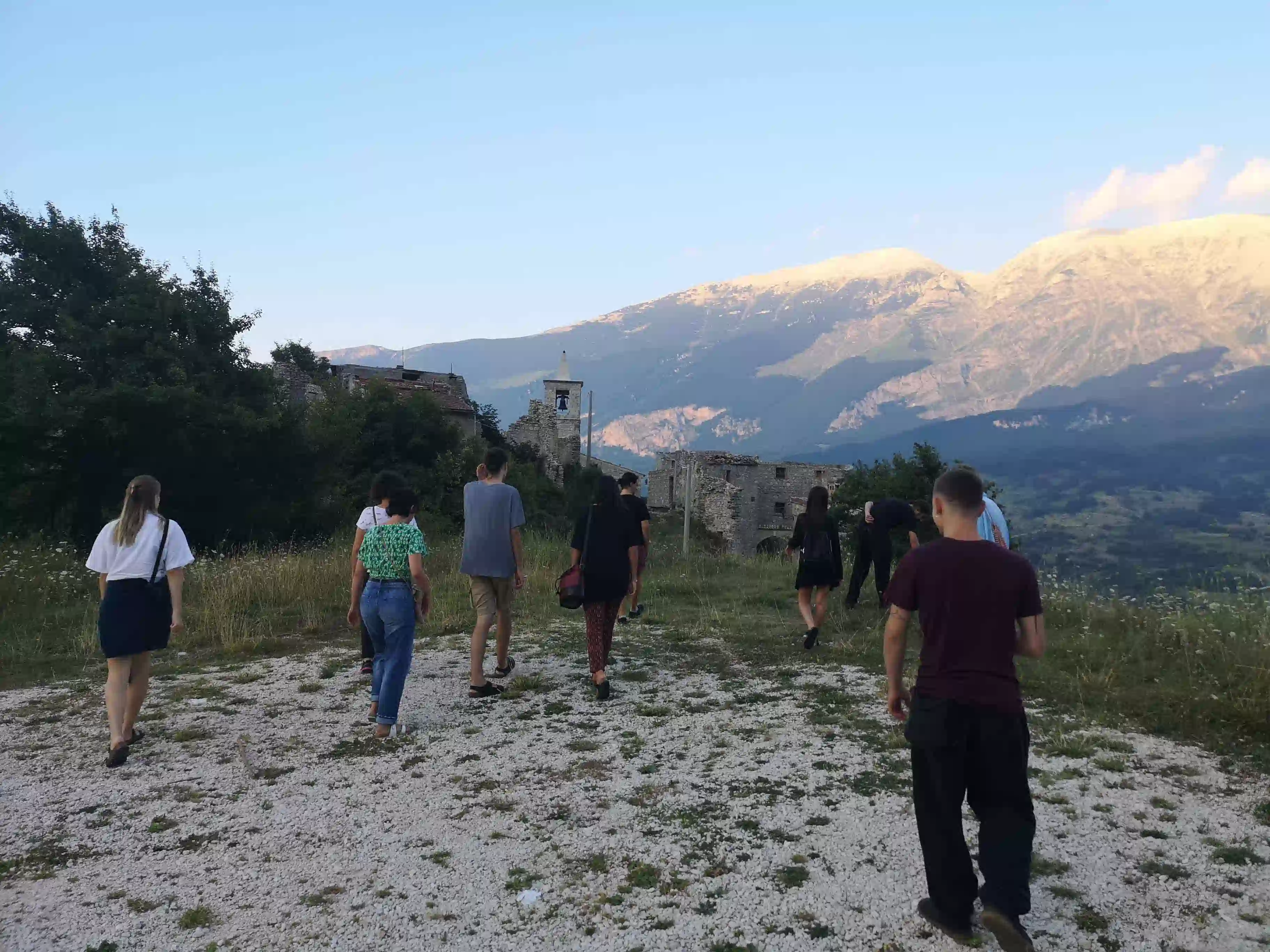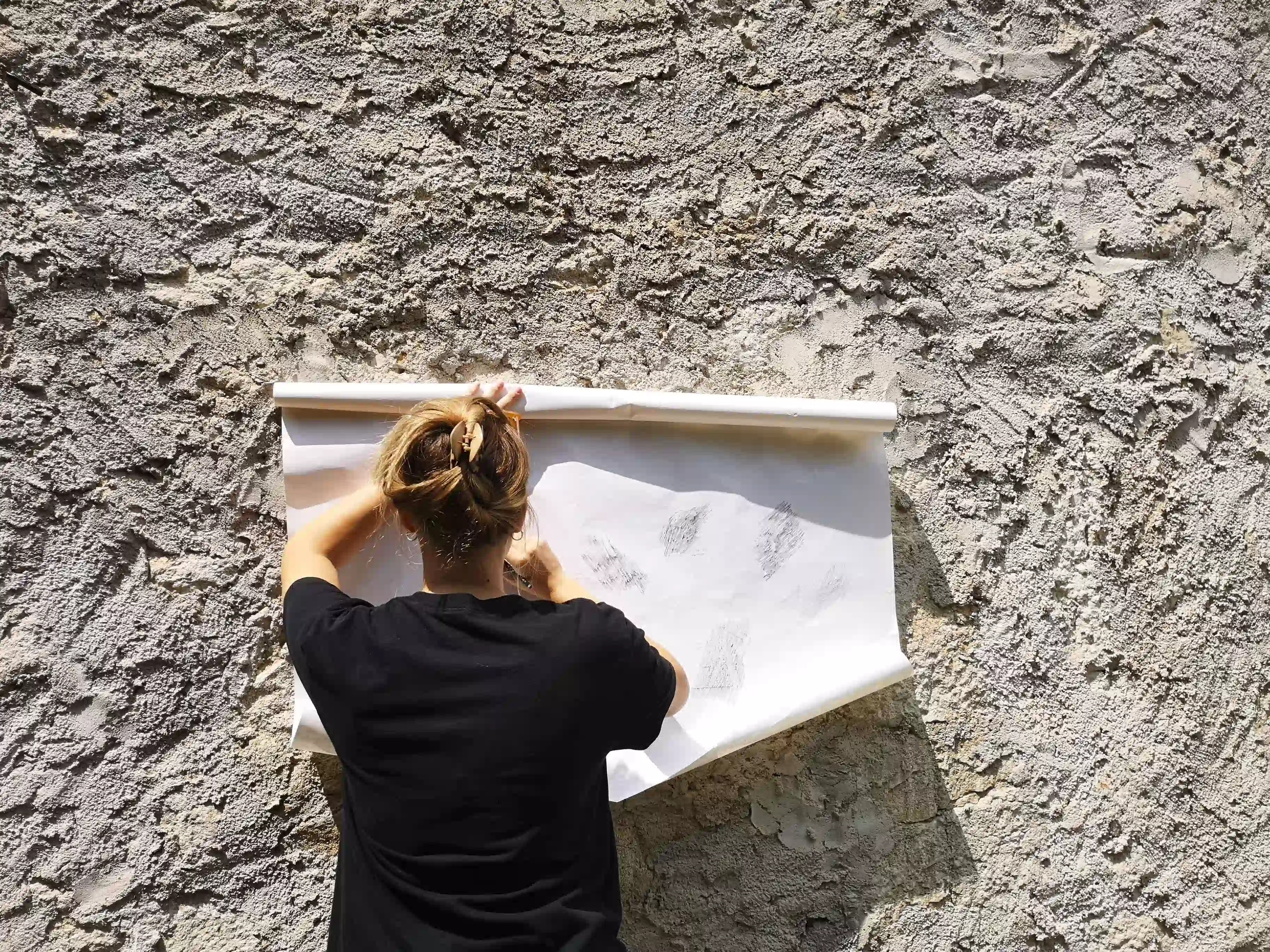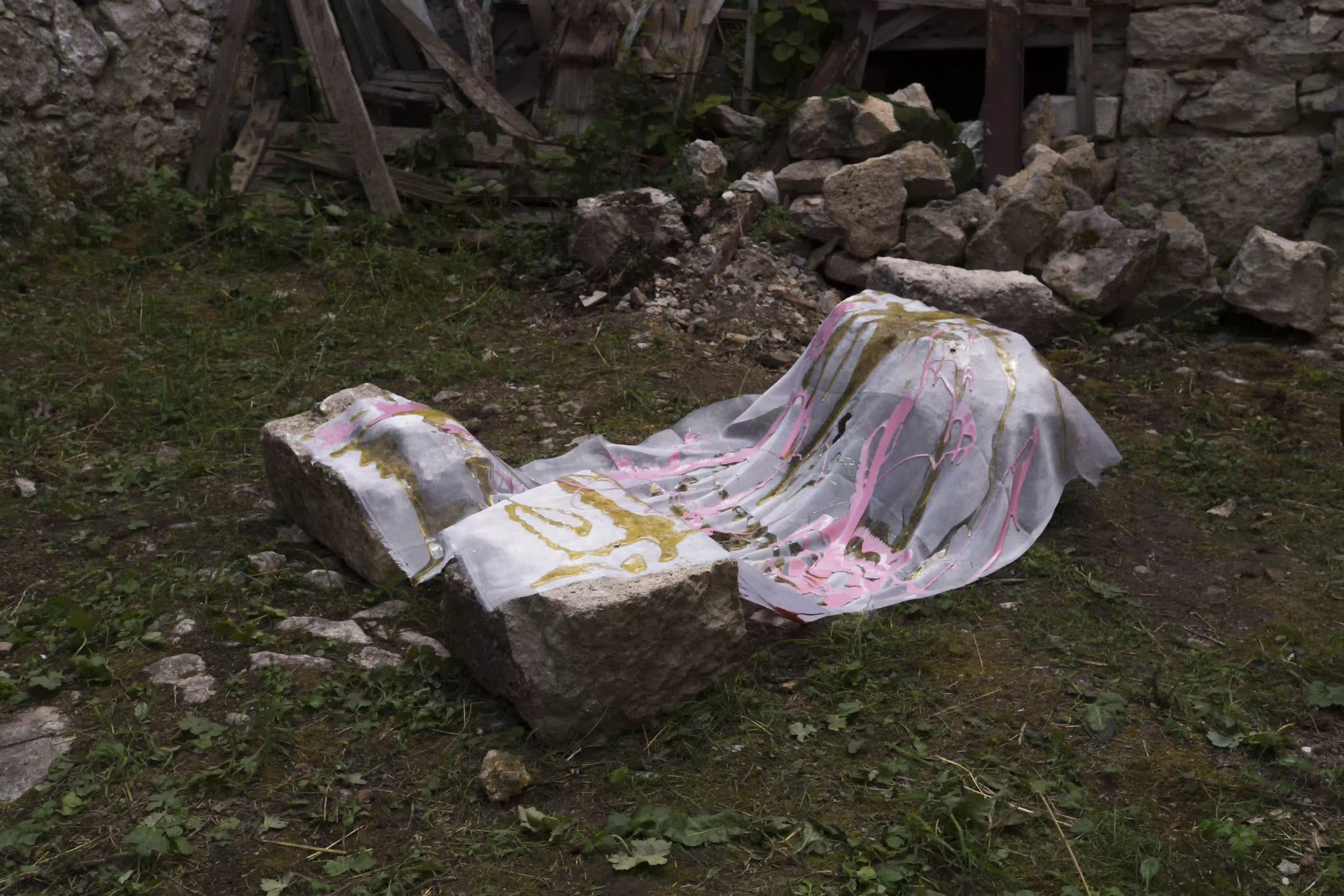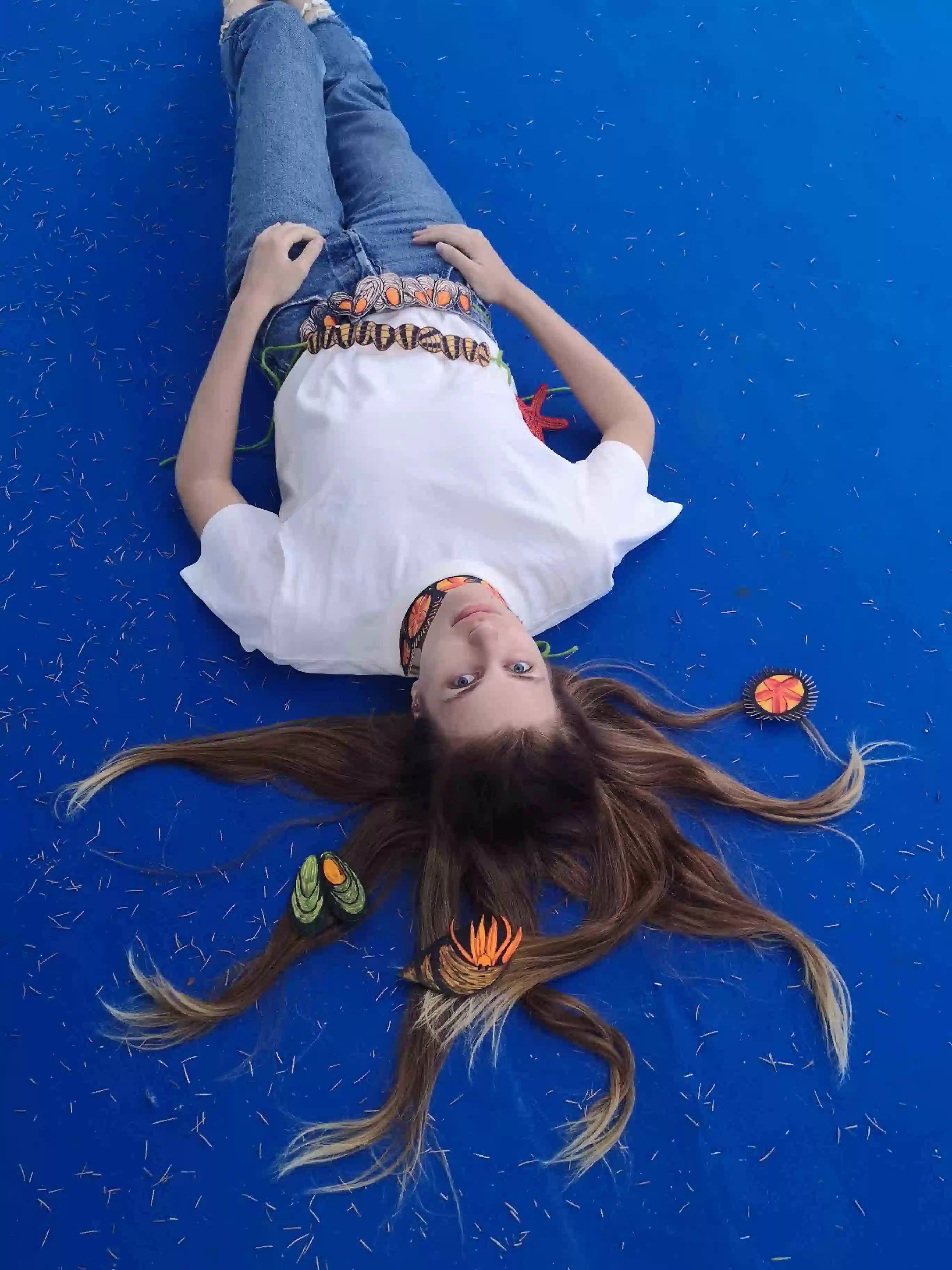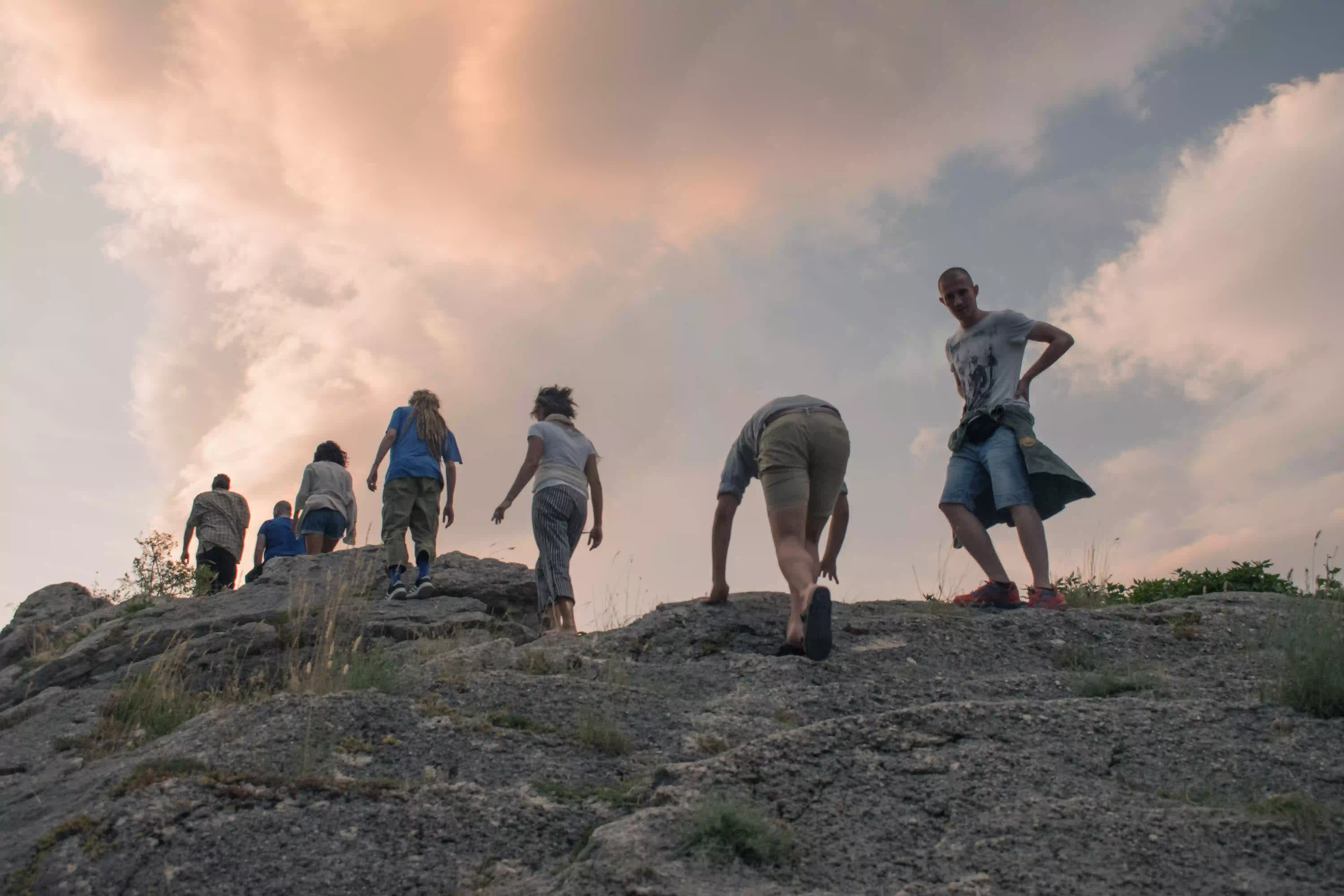
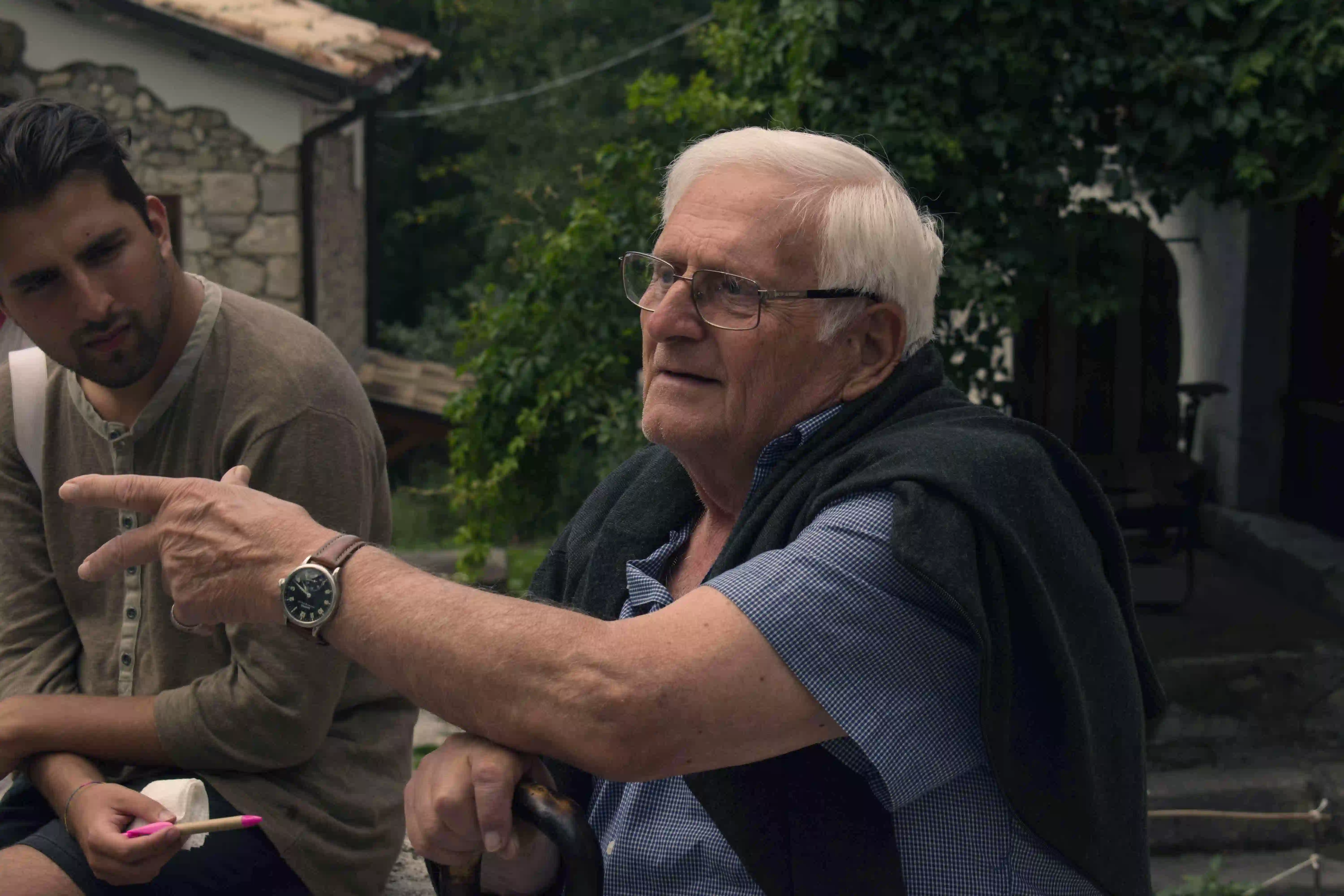
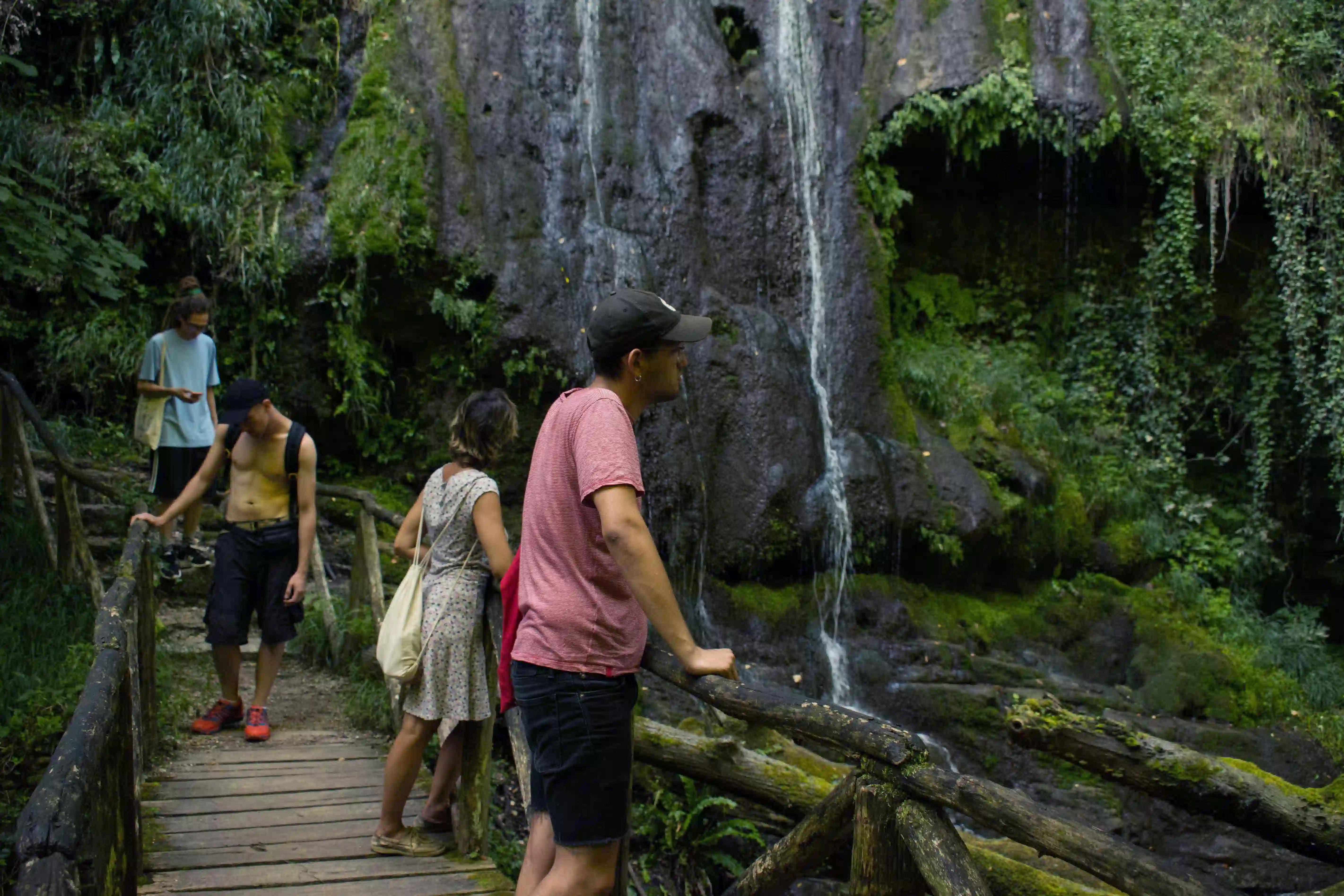
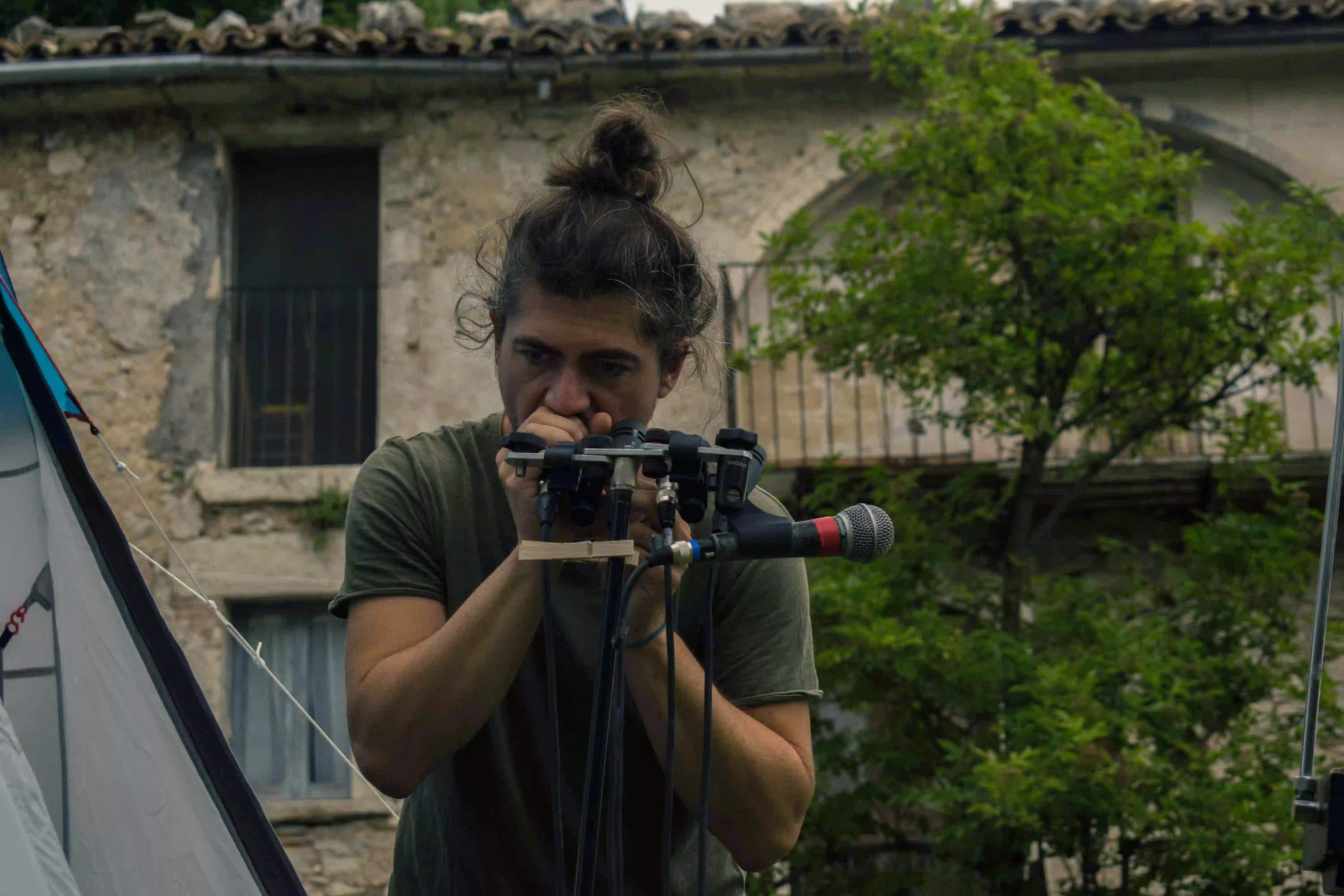
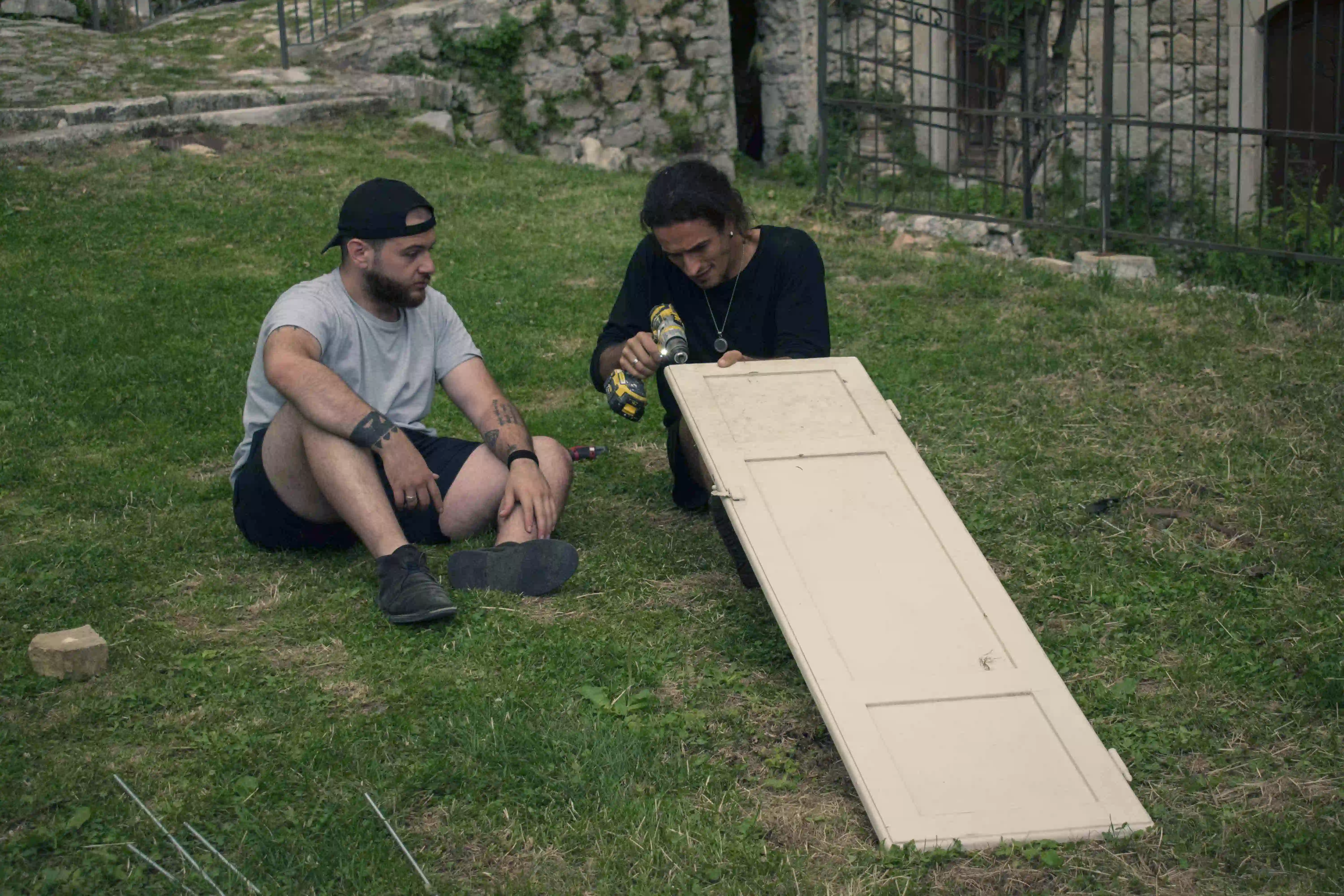
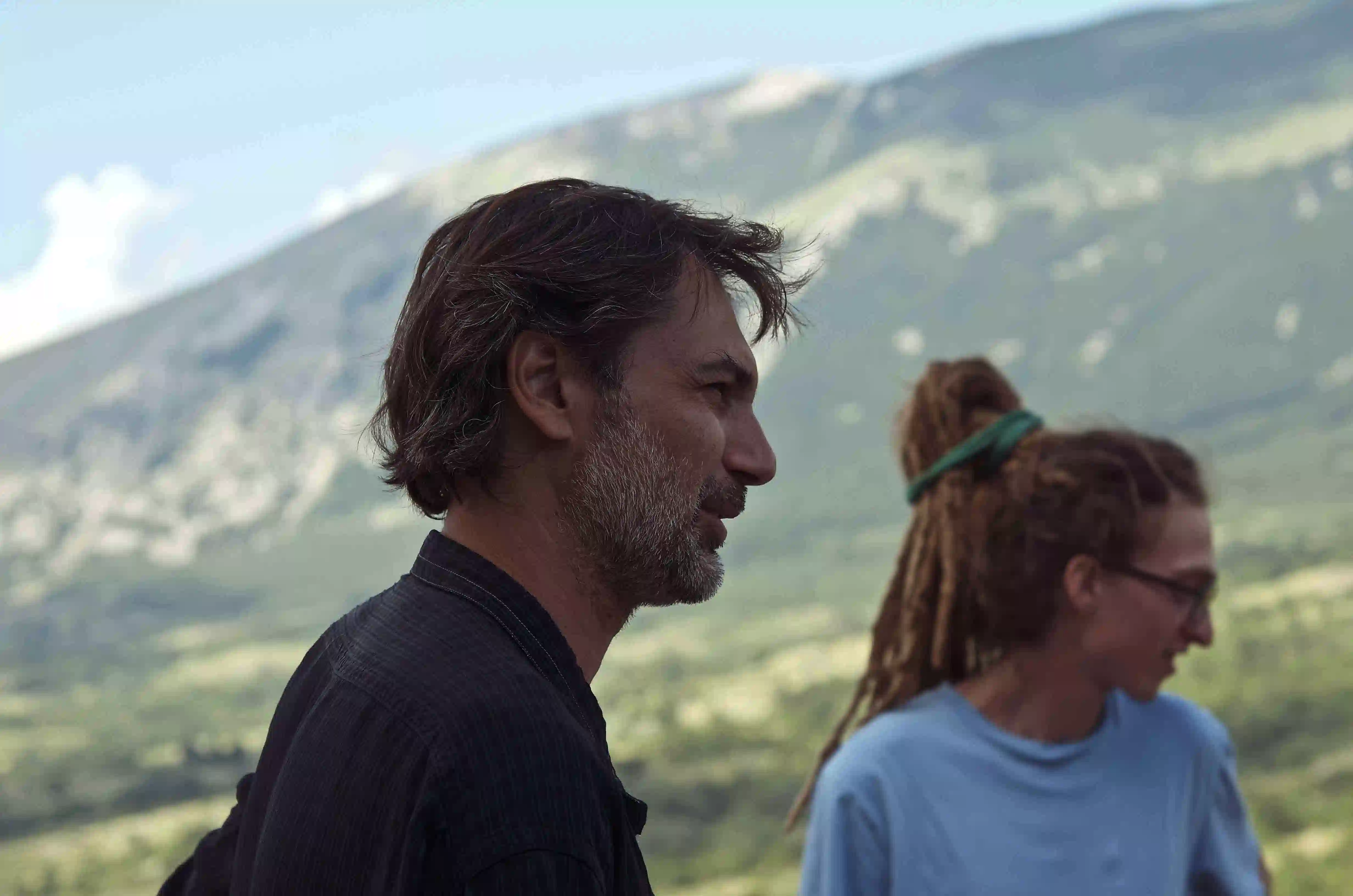
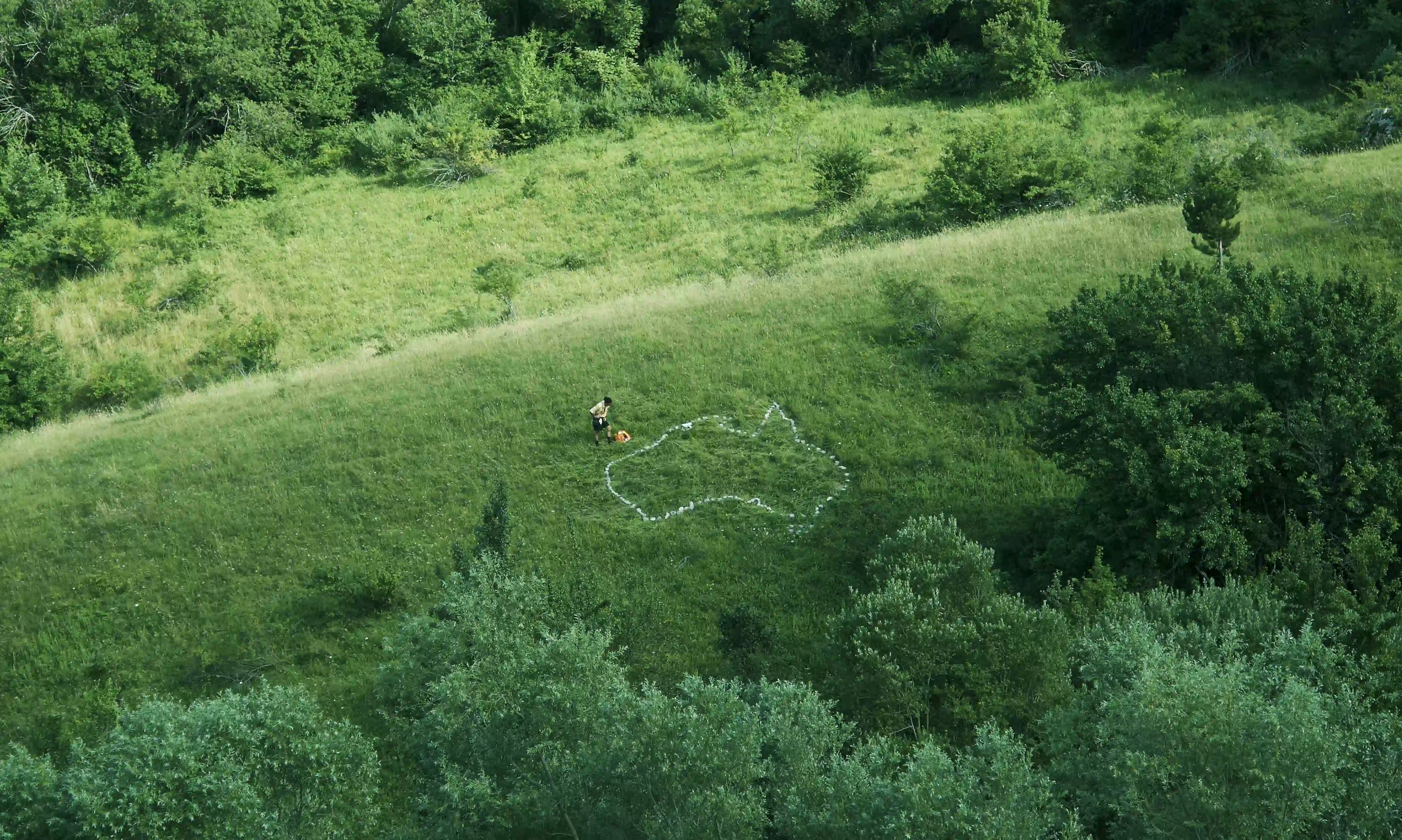
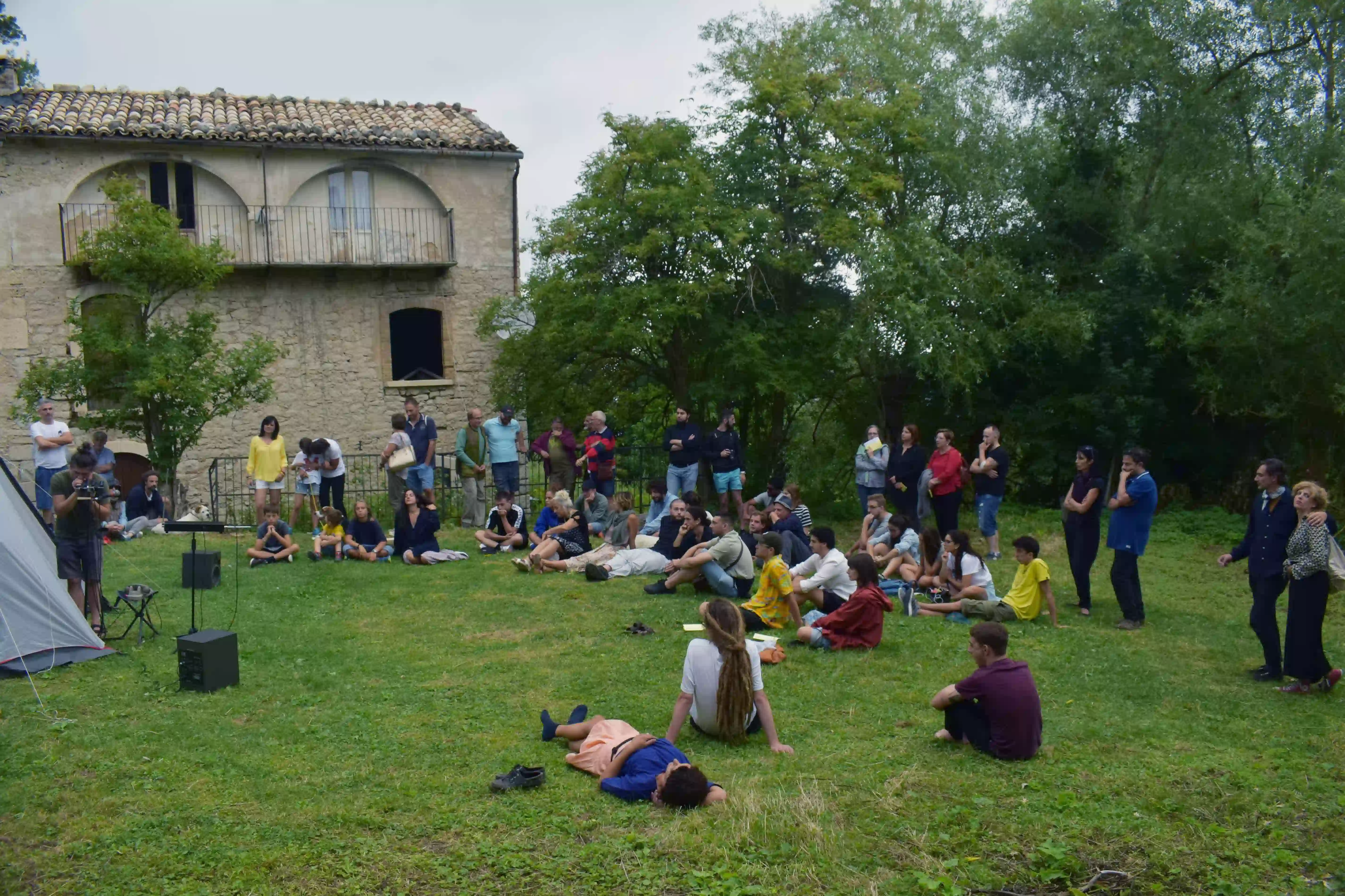
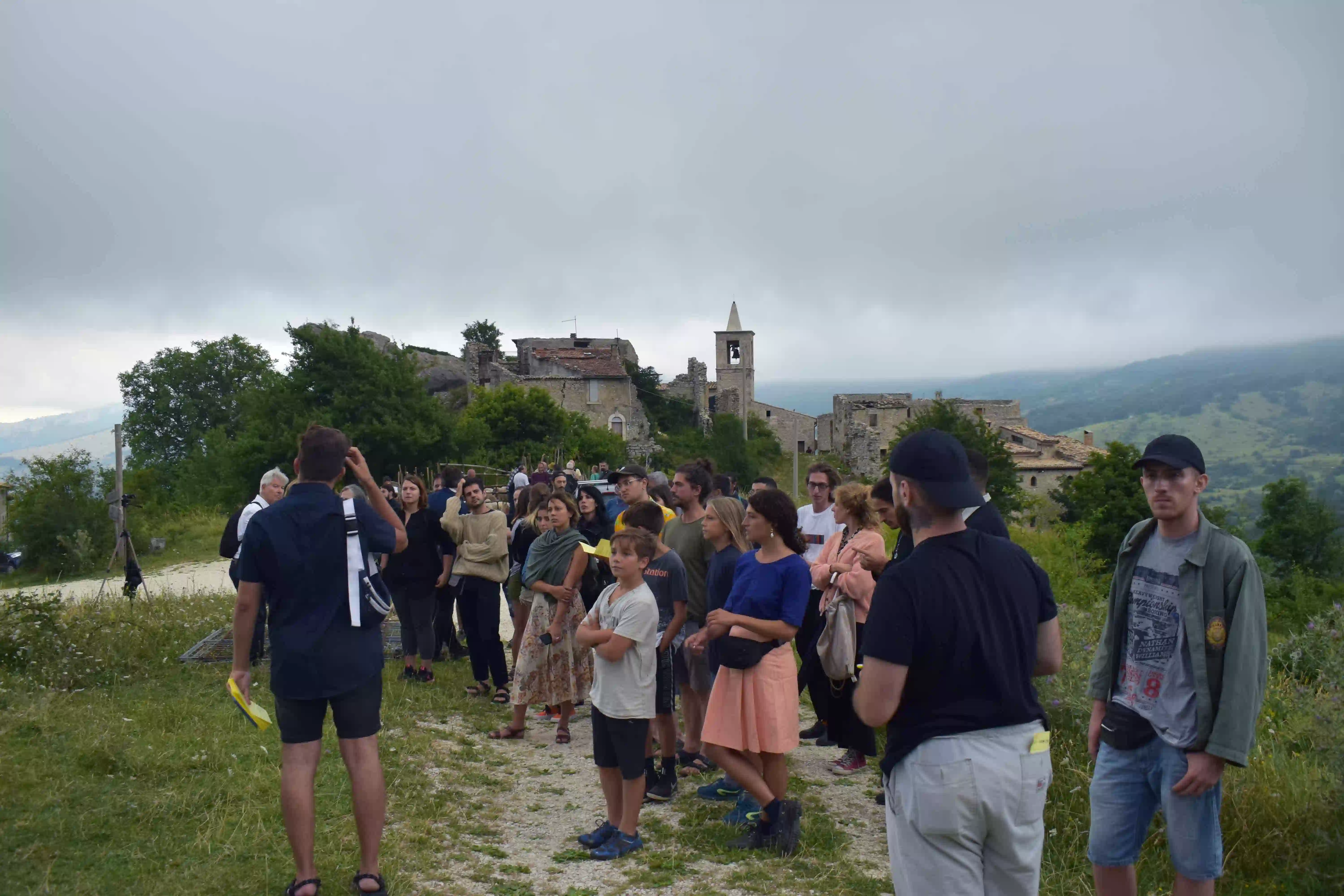
Un paese tutto per te
2019
The second edition of ”Un paese tutto per te.” (A town all for you.) confirmed the atmosphere of sharing and light-heartedness that had already emerged in its first edition. The peculiarities of the residency are not about the projects’ development or about the artworks themselves, but rather about the ability of living day by day a sort of productive experience made of dialogues, tales, moments that seem to be suspended in time. In addition to having gotten to know and visit the locations surrounding the hamlet, the artists inhabited the town alongside the vacationers and gradually settled in with the place and among themselves, also facilitated by the cohabitation in close contact inside the small house that hosts the residency: a place where we are crammed in about ten people and we share double beds with more than two people, even three actually! Here a convivial atmosphere is created, in which to confront and share one’s work with other artists and with the casual curious vacationer, as if making art would become something different, something new. This edition’s spirit was fresh, seemingly lighthearted but instead deep, enriched with moments like stargazing with the town’s lights off while listening to our murmoring, besides the natural sounds, a confusing yet familiar murmoring. The artworks that were born during the residency are the result of a research capable of giving back a sense of curiosity: that curiosity is no more than the actual being together during the week and setting aside one’s own daily routine, as it happens on holiday, because it’s actually here where one can comprehend what the everyday life truly is.
La seconda edizione di "Un paese tutto per te." ha confermato il clima di condivisione e spensieratezza che già era emerso nella prima edizione. Le peculiarità della residenza non stanno negli sviluppi progettuali dei lavori o nelle opere in sé, ma nella capacità di vivere giorno per giorno una sorta di esperienza produttiva fatta di dialoghi, di racconti, di momenti che sembrano sospesi nel tempo. Oltre ad aver conosciuto e visitato i luoghi intorno al paese, gli artisti hanno abitato il borgo con i suoi villeggianti e mano a mano si sono ambientati con il luogo e fra di loro, facilitati anche dalla convivenza a stretto contatto della piccola casa che ospita la residenza: luogo dove siamo stipati più o meno in dieci persone e si condividono letti matrimoniali addirittura in più di due, ben tre persone! Viene così a crearsi un clima conviviale, in cui confrontarsi e condividere il proprio lavoro con gli altri artisti e con l’occasionale curioso villeggiante, come se il fare arte diventasse qualcosa di diverso, di nuovo. Lo spirito di quest’edizione è stato fresco, all'apparenza leggero ma profondo, arricchito di momenti come l’osservare le stelle a luci spente e sentire, oltre ai suoni della natura, anche il vociare tra noi, un vociare confuso ma familiare. I lavori nati durante la residenza sono il risultato di una ricerca che sappia restituire un senso di curiosità: quella curiosità altro non è che lo stare insieme nella settimana e mettere da parte la propria routine quotidianità, come si fa in vacanza perché è proprio qui che si riesce a comprendere cosa sia veramente la quotidianità.
Curator
Andrea Croce
Photography and Video
Teresa Licciardi
Special thanks to
Antonio Romano
Licio Di Biase
Silvano Agostini
Date
July 27th → August 3rd 2019
More info
The project was self-iniciated and self-financed
Artists
Lorenzo Kamerlengo
Alberto Rota
Chiara Druda
Martina Marini Misterioso
Matei Vladimir Colțeanu
Alessandro Gabini
Matteo Messori
Live performances and Contributions
Davide Grotta
Enzo Del Giudice
The event takes part in “Accendiamo il Medioevo”, directed by Licio di Biase from the 2nd to the 4th of August in Roccacaramanico, with the partnership of the PescaraTutela association, Municipality of Sant’Eufemia, Roccacaramanico Association and Majella National Park.
L’evento è parte della manifestazione “Accendiamo il Medioevo” diretta da Licio Di Biase dal 2 al 4 agosto presso Roccacaramanico, con la partnership dell’associazione PescaraTutela, Comune di Sant’Eufemia, Associazione Roccacaramanico e Parco Nazionale della Majella.
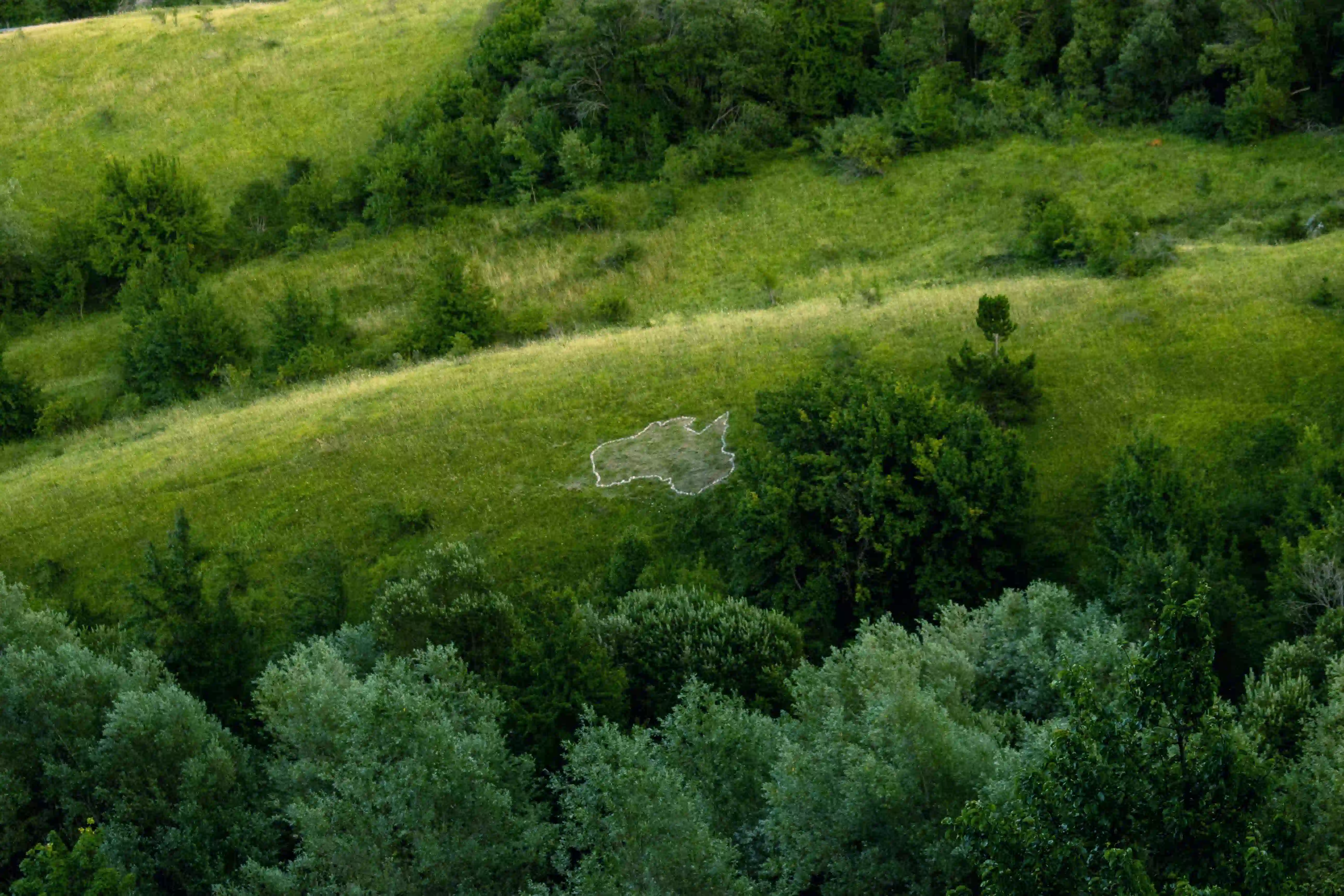
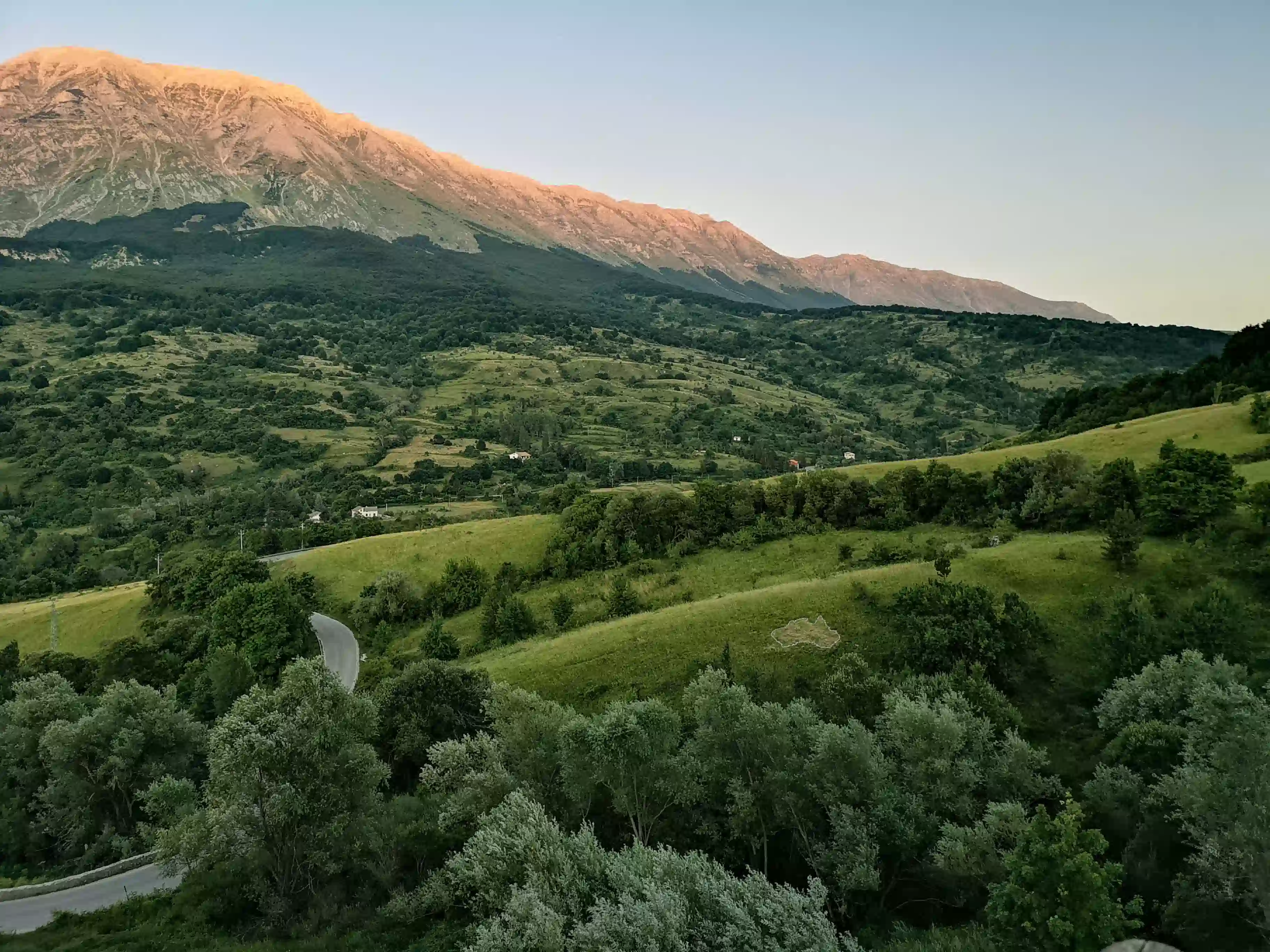
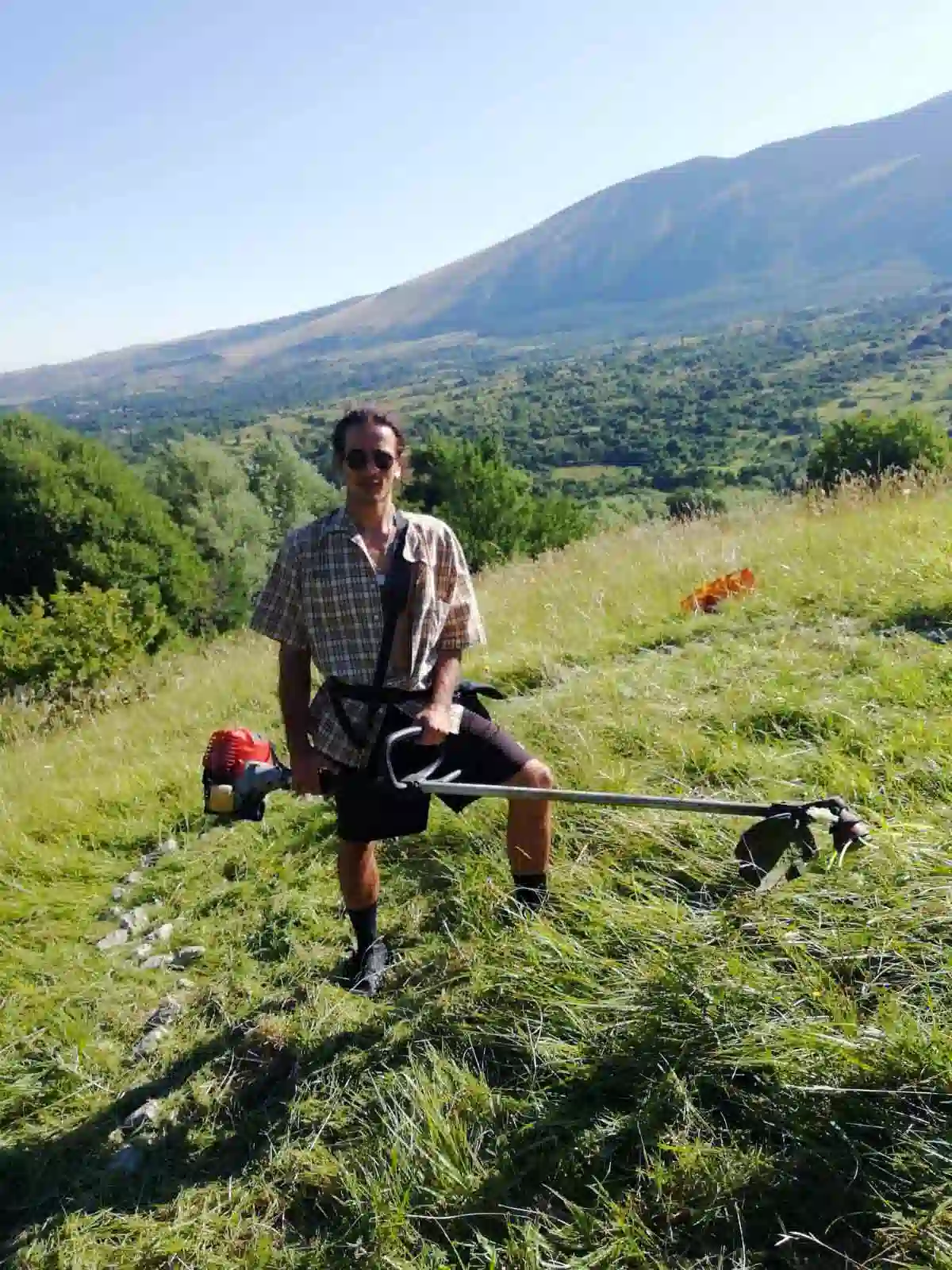
Picnic in Australia
Lorenzo Kamerlengo
In the seventies Roccacaramanico’s residents emigrated in Australia, leaving behind a deserted town. Today, Lorenzo Kamerlengo gives the town a pic-nic area a few hundred meters from the belvedere.
Stones on grass, cut grass (mulching)
Negli anni settanta Roccacaramanico emigra in Australia, lasciando il paese disabitato. Oggi, Lorenzo Kamerlengo offre al paese un'area pic-nic a poche centinaia di metri dal Belvedere.
Rocce su prato, taglio d'erba (mulching)
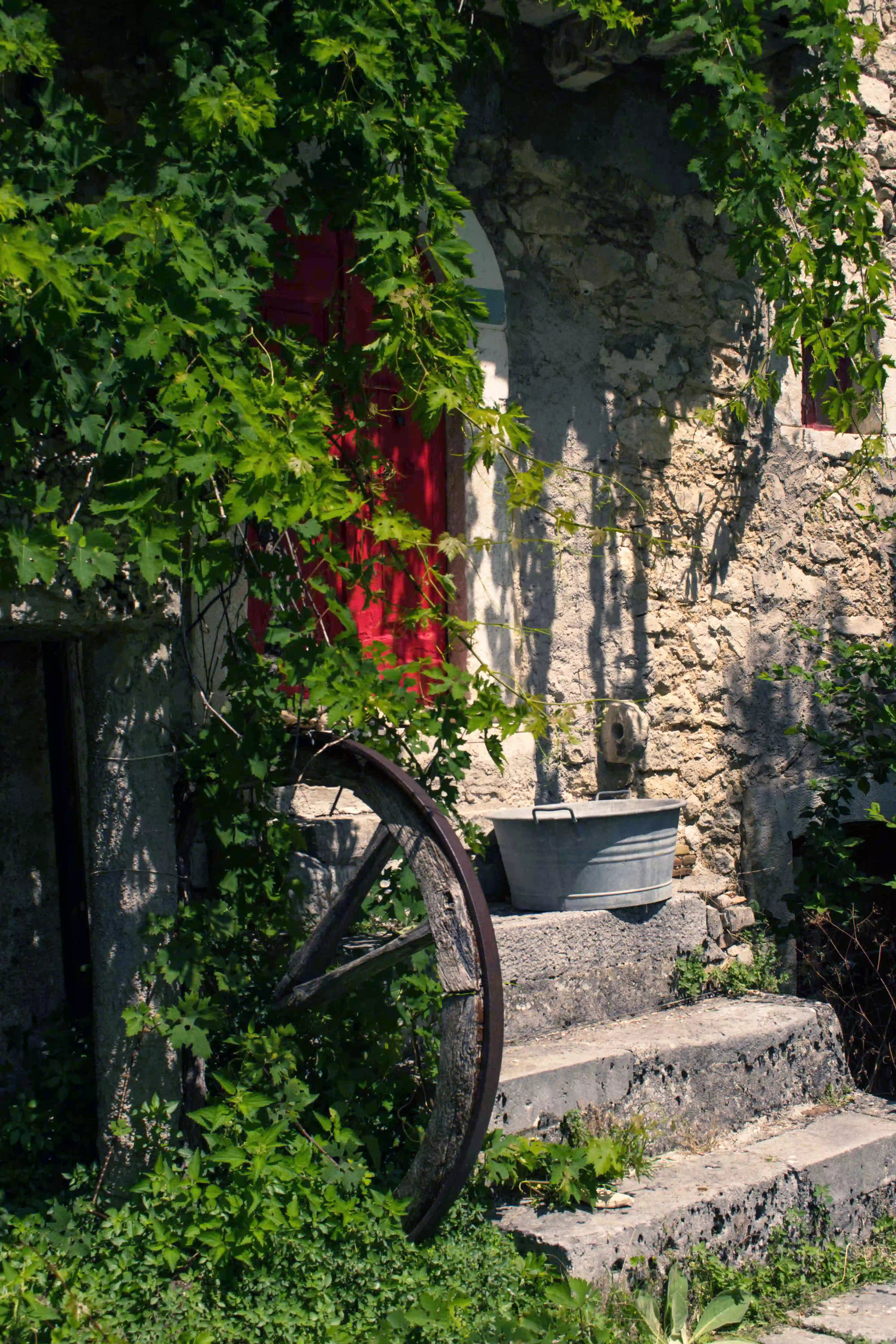
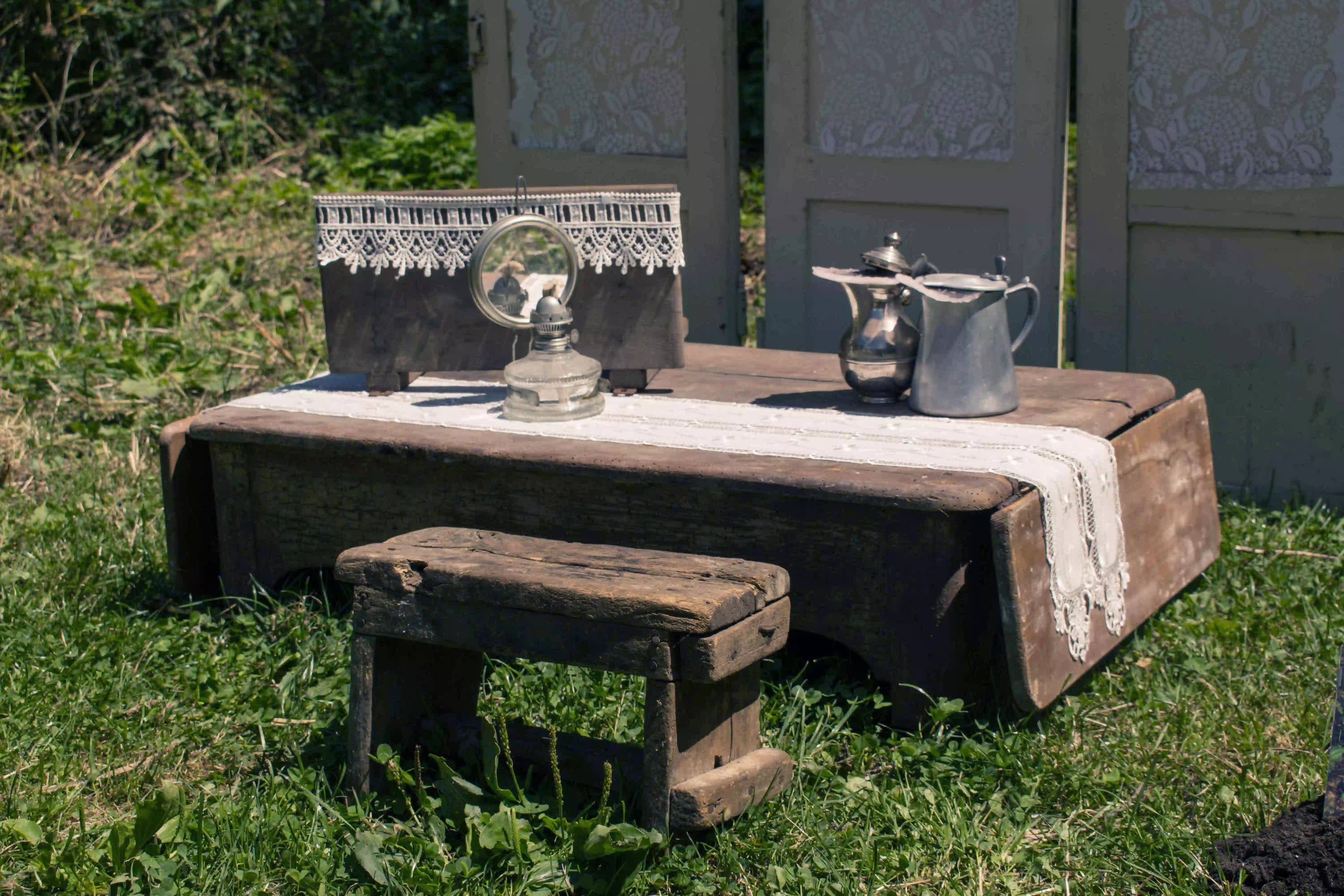
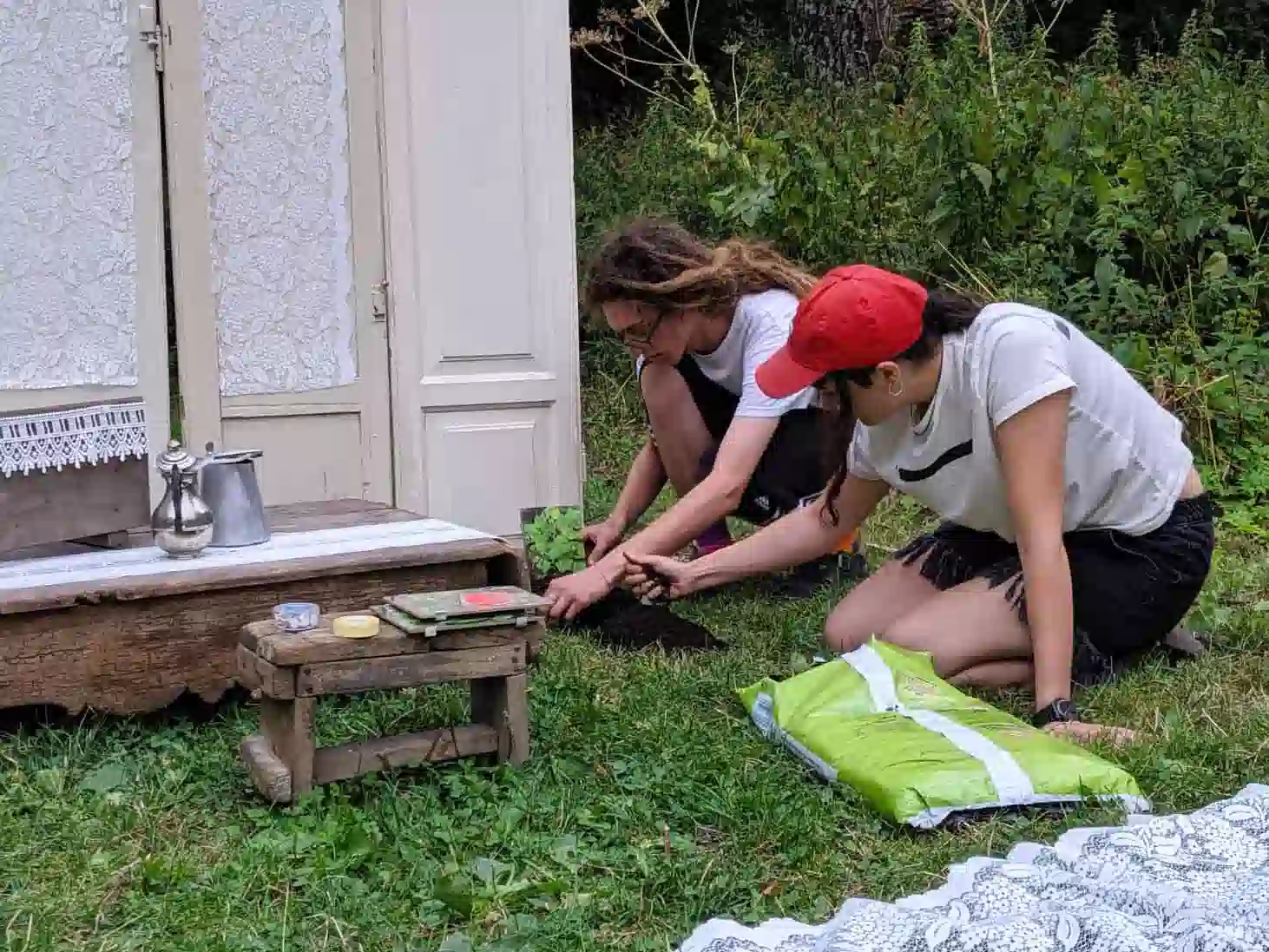
Galleggiante e Del tempo, dello spirito (Luoghi)
Alberto Rota
Some beans stagnate in milk, in a pond dotted with elements of high symbolic and evocative power. Assembled objects form an environment in which the glance distance allows one to notice the particular, but as one gets closer, the defect makes it evident in the gesture of the everyday and in the home dimension.
Milk, pluriball, paraffin, container, thread, furniture.
Dei fagioli ristagnano nel latte, in uno stagno costellato di elementi dal forte valore simbolico ed evocativo. Oggetti assemblati formano un ambiente nel quale la distanza dello sguardo permette di notare il particolare, ma avvicinandosi, il difetto si rende evidente nella gestualità del quotidiano e nella dimensione casalinga
Latte, pluriball, paraffine, recipiente, filo, mobilio.
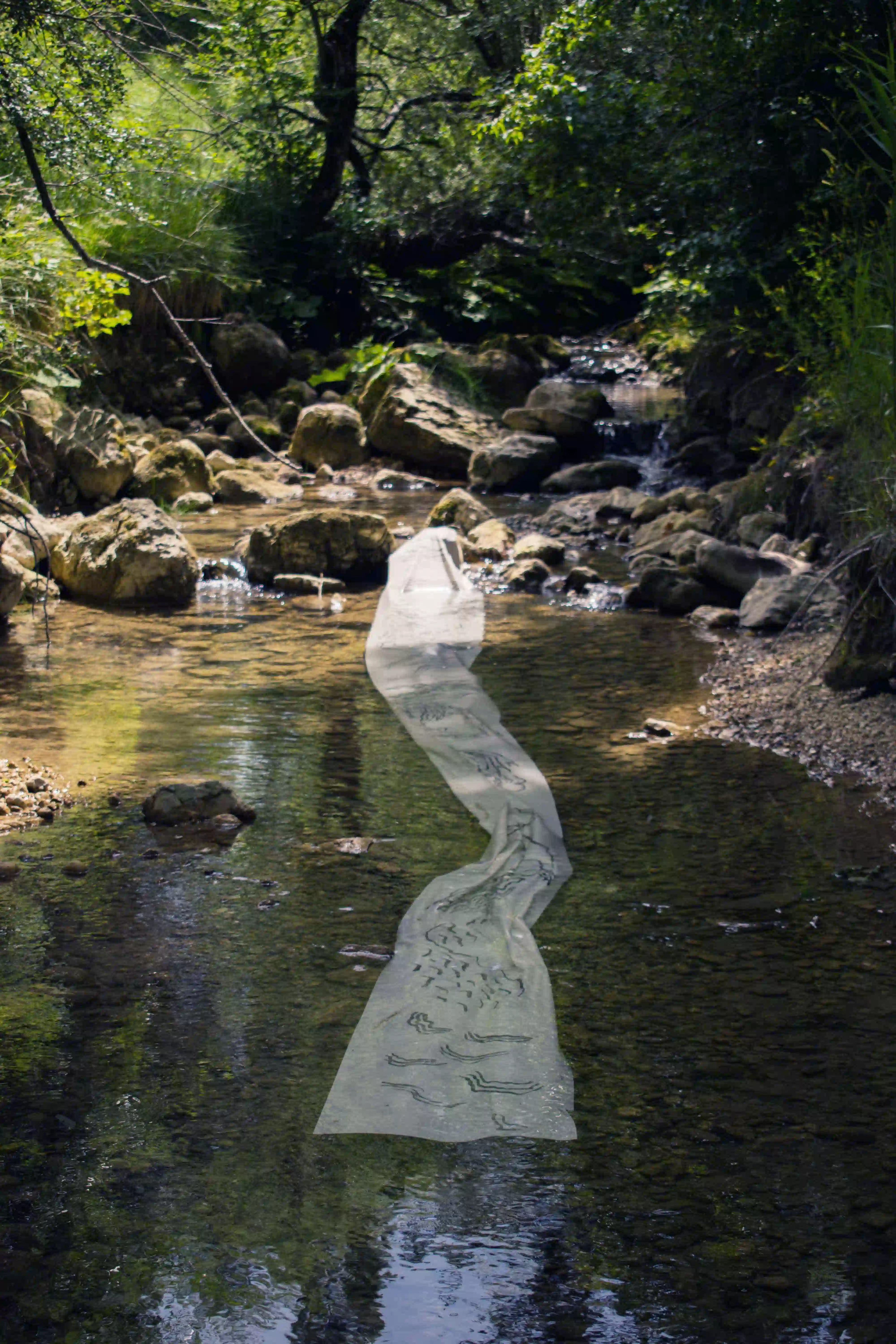
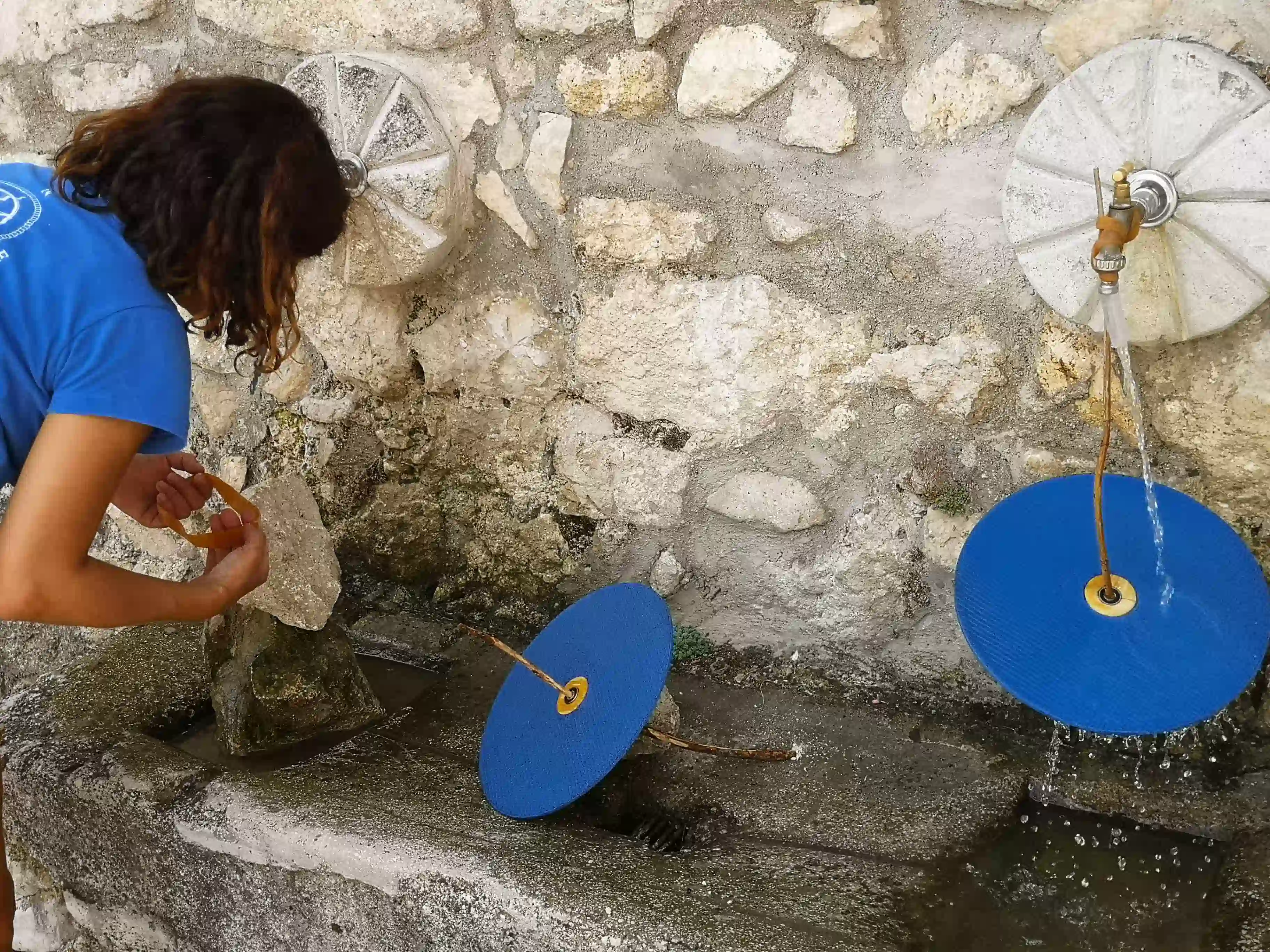
Repetita
Chiara Druda
What repeats, transforming mutates.
Grinding wheels, stone, rubber bands
Ciò che si ripete, trasformando muta.
Dischi per molatura, roccia, elastici
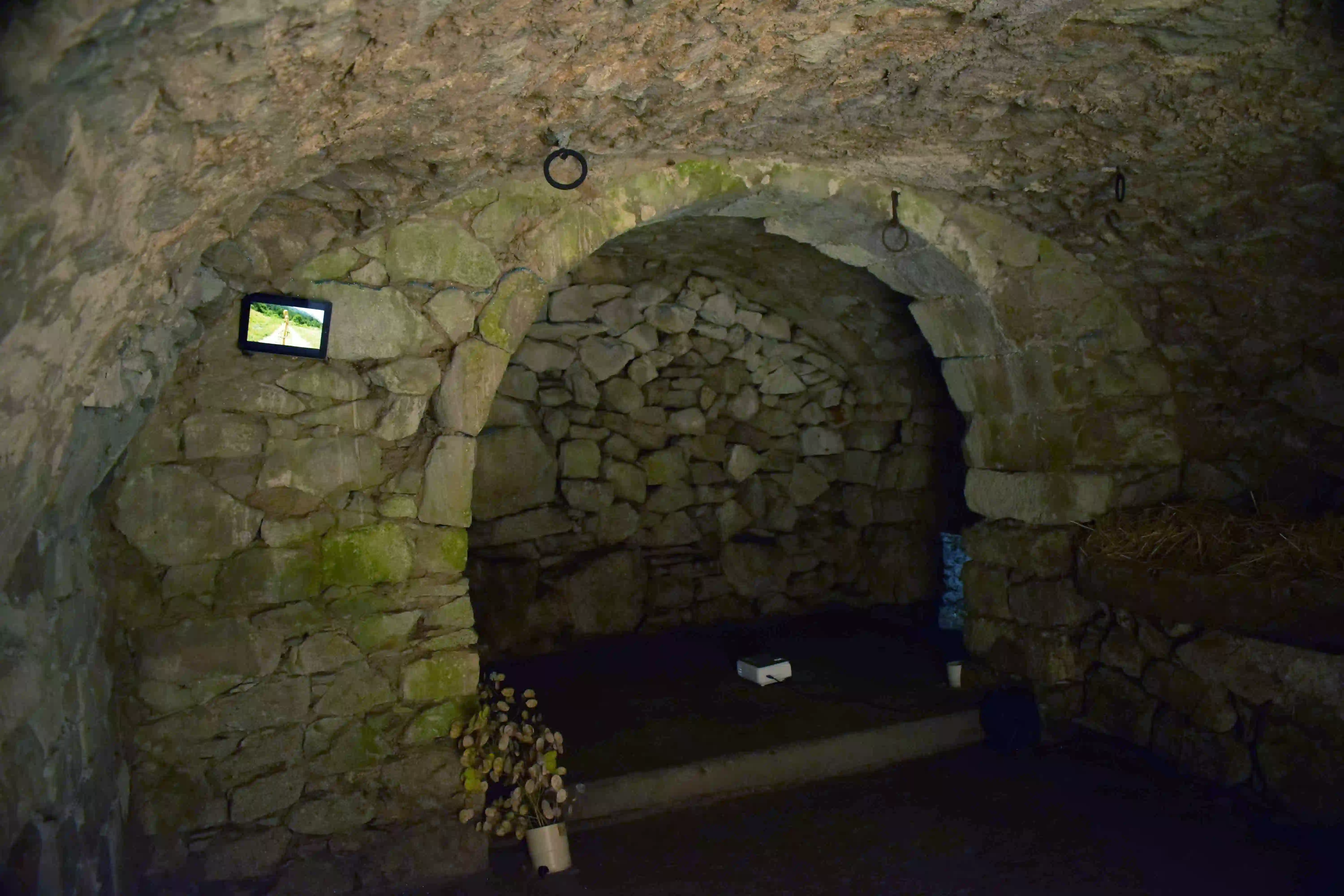
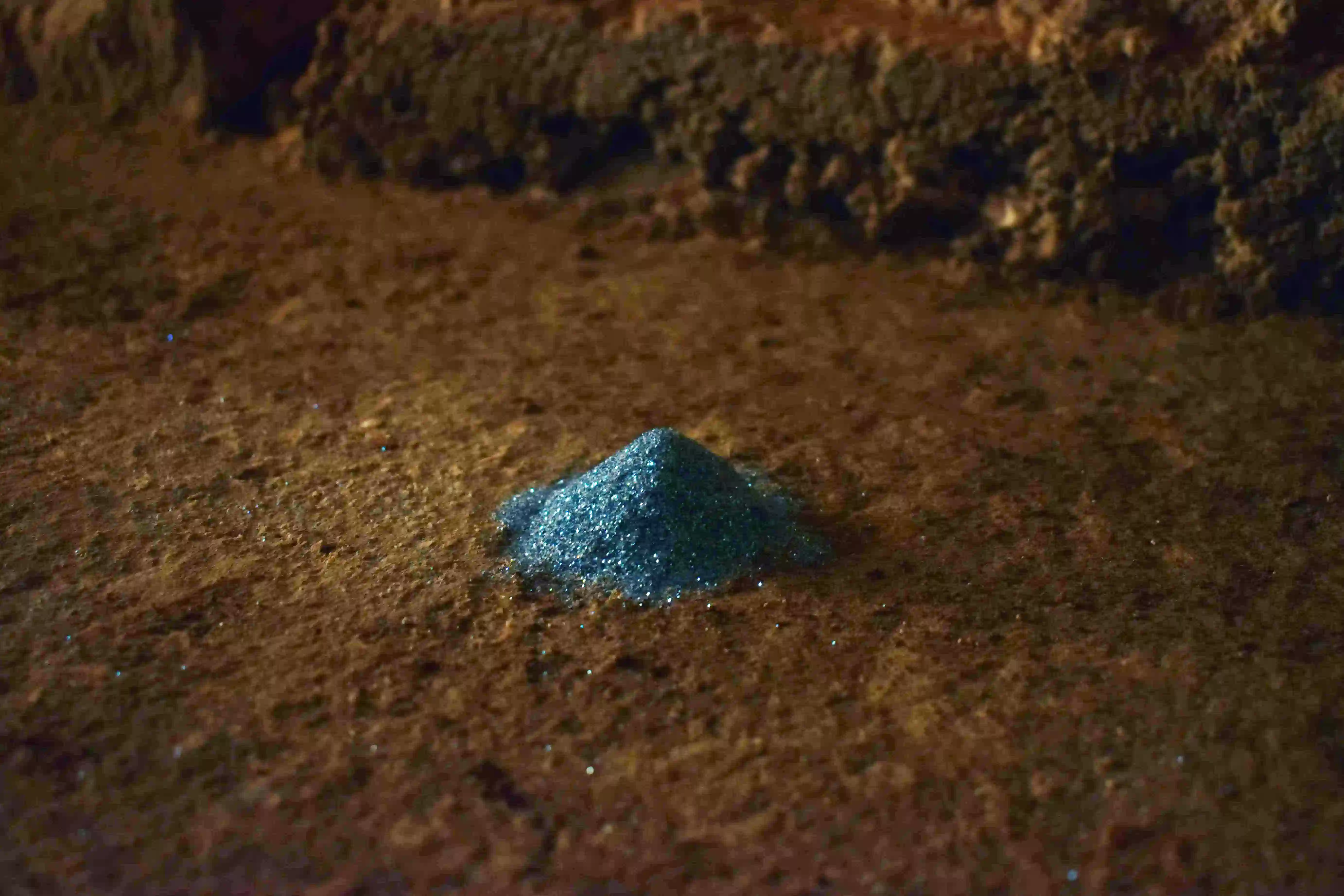
When The Sky Grows
Martina Marini Misterioso
“Spin around while I verify the desire of who remained alone.”
Martina, inspired by the myth of Deucalion and Pyrrha, curled up on the ground, awaits for something to come to life in a cycle of sounds and images.
Martina, inspired by the myth of Deucalion and Pyrrha, curled up on the ground, awaits for something to come to life in a cycle of sounds and images.
Videoinstallation. Honesty (plant), cushion, glitter
"Ruota su te stesso mentre verifico il desiderio di chi rimase solo."
Martina, ispirata dal mito di Deucalione e Pirra, rannicchiata a terra, attende che qualcosa prenda vita in un ciclo di suoni e immagini.
Martina, ispirata dal mito di Deucalione e Pirra, rannicchiata a terra, attende che qualcosa prenda vita in un ciclo di suoni e immagini.
Videoinstallazione. Medaglione del Papa (pianta), cuscino, glitter
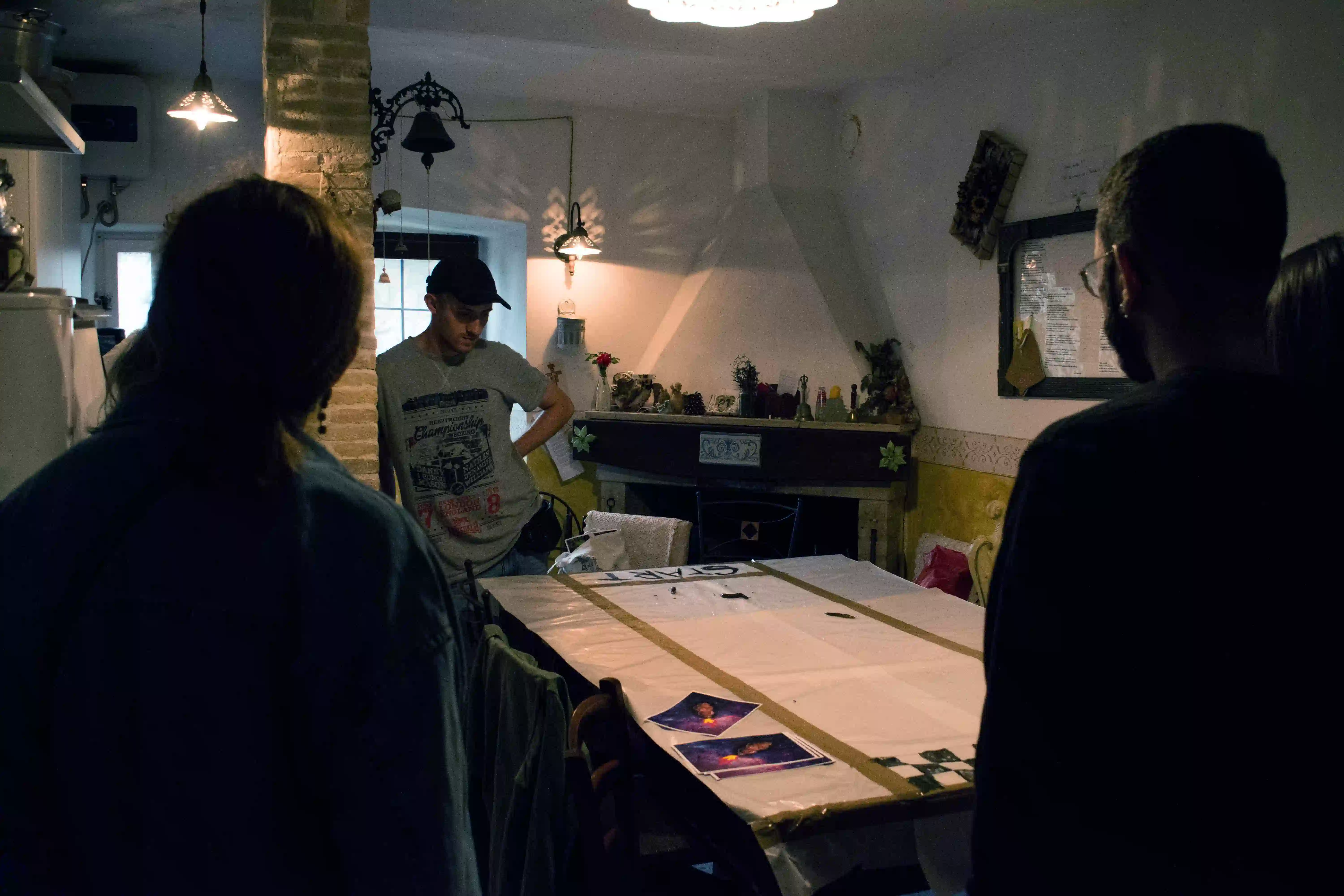
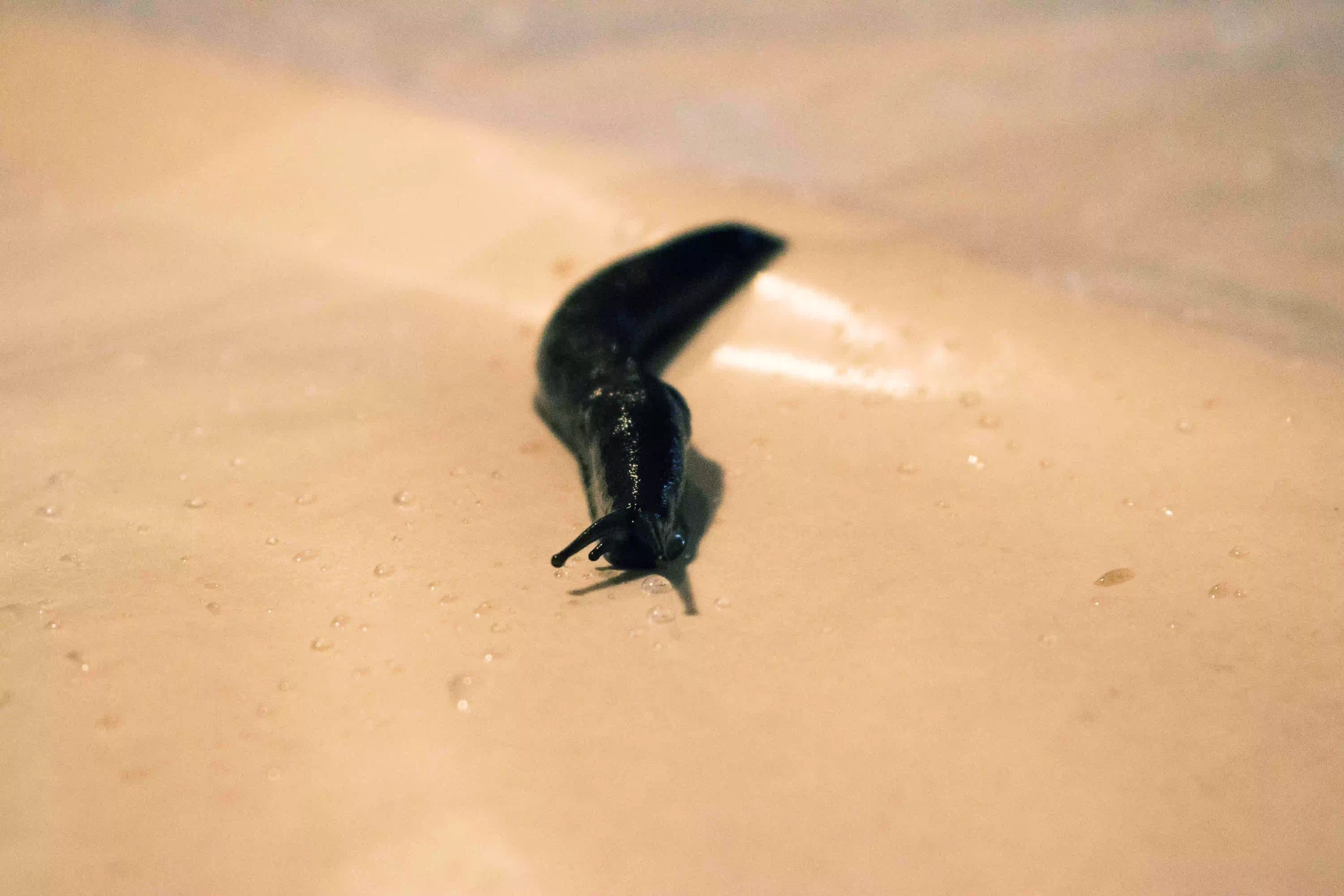
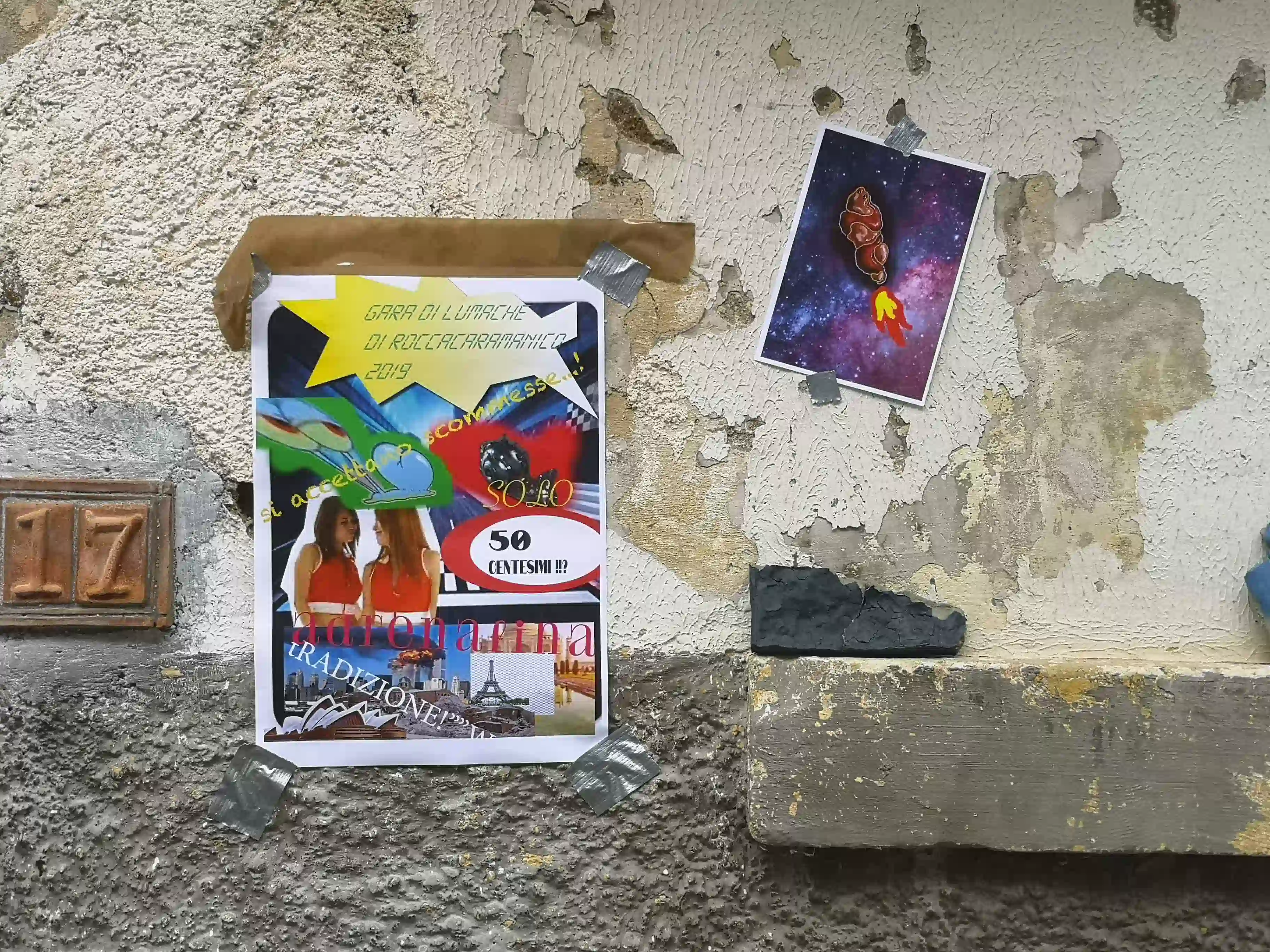
Corsa delle lumache di Roccacaramanico 2019
Matei Vladimir Colțeanu
Matei twists the dimension of the traditional event by inviting visitors to take part in such grotesque act, which is born from the necessity to remark the conflict between fiction and reality.
(The artist hates Nicholas Bourrioud)
Performance
Matei stravolge la dimensione tradizionale dell'evento, invitando i visitatori a partecipare all'atto grottesco, che nasce dalla necessità di marcare la contraddizione fra finzione e realtà.
(L'artista odia Nicholas Bourrioud)
Performance
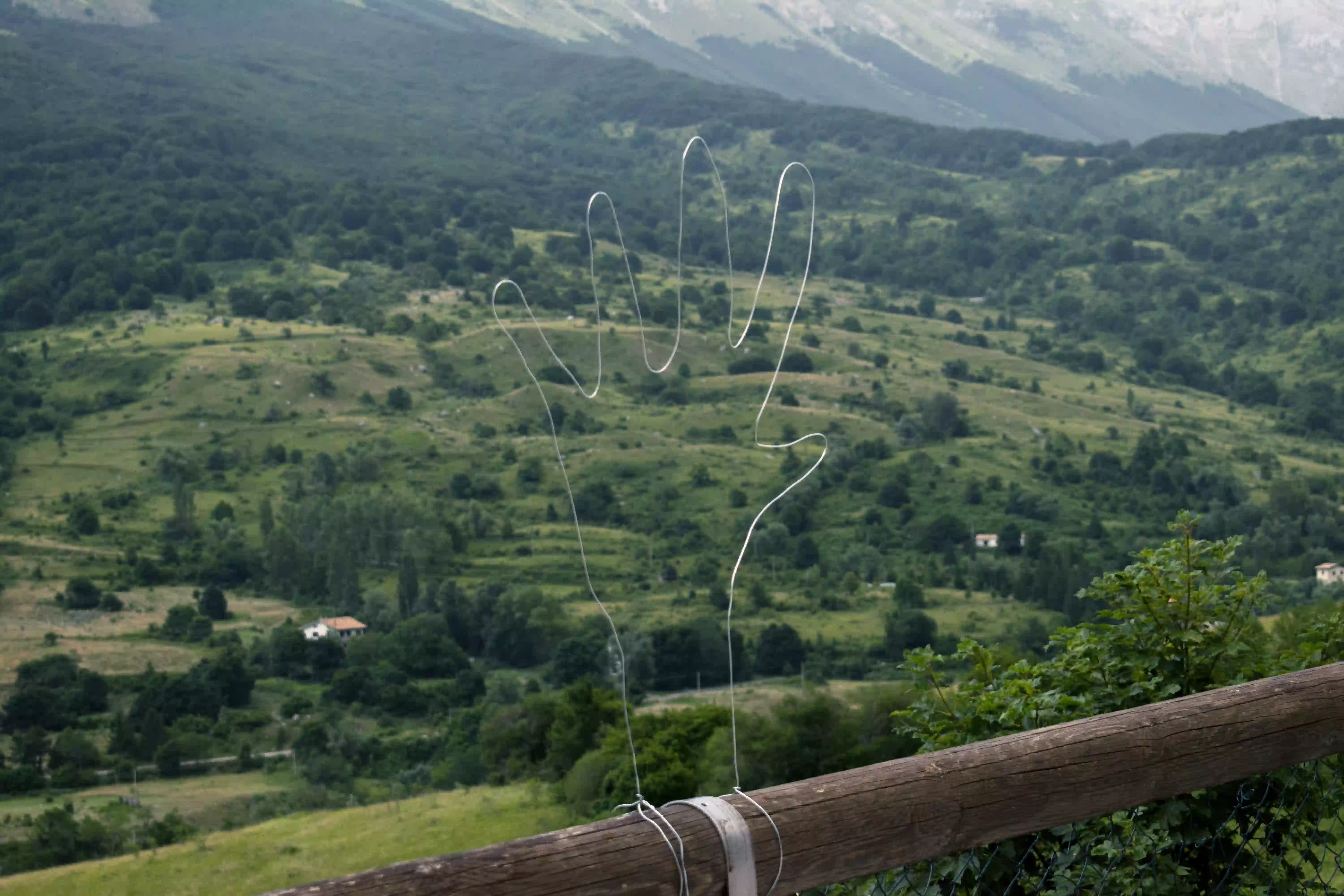
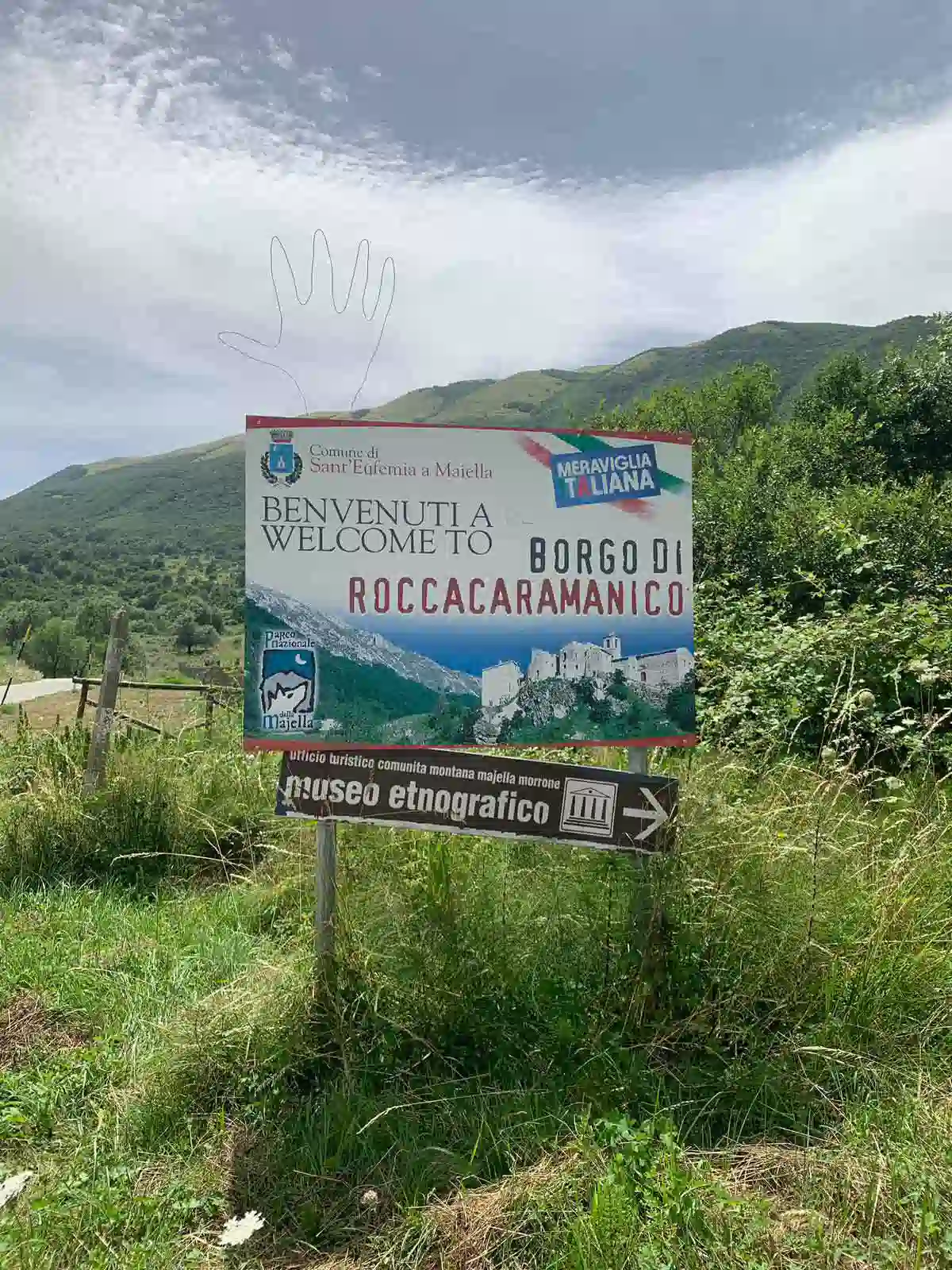
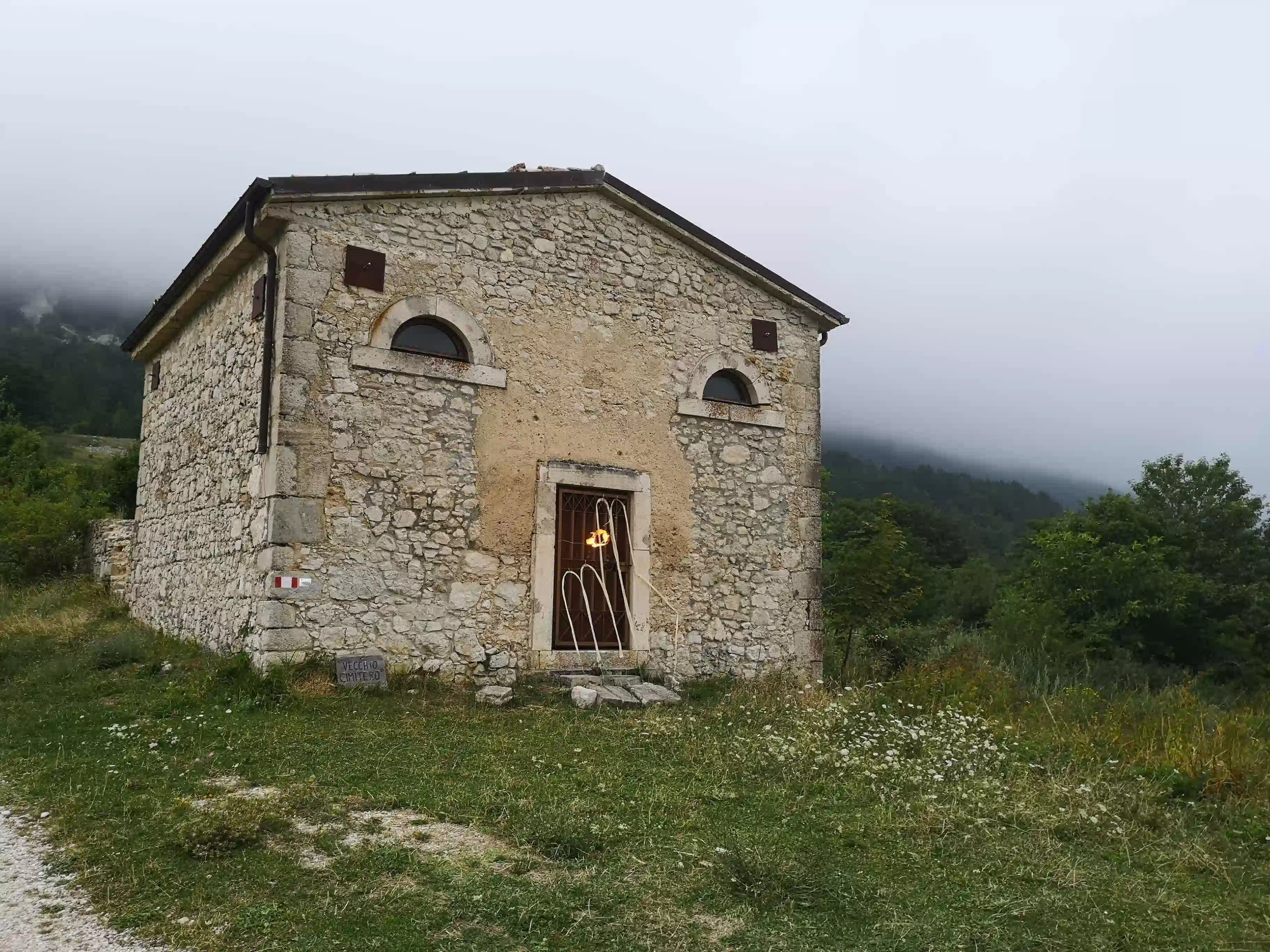
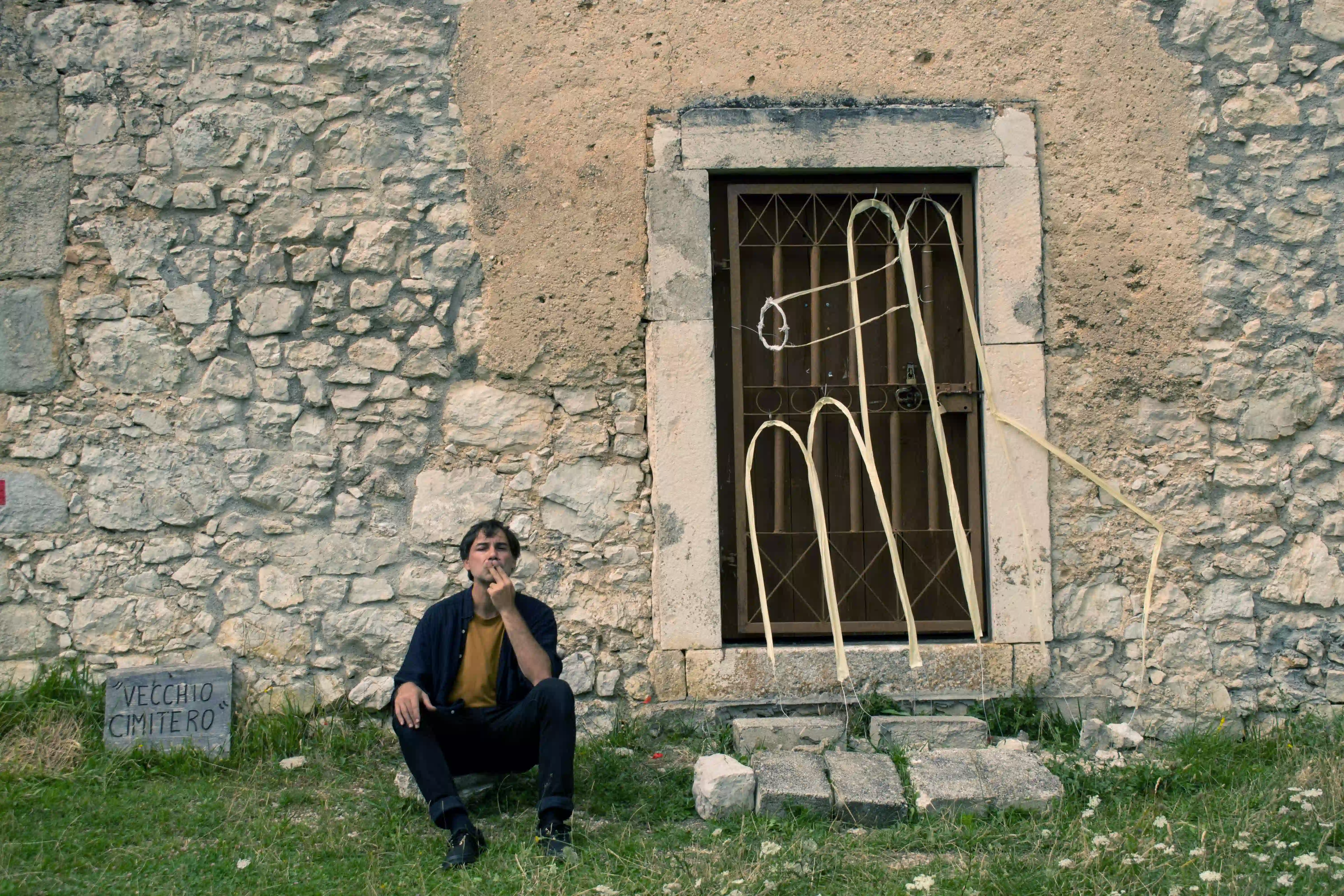
Ciao da Roccacaramanico e Relax al cimitero
Alessandro Gabini
Two hands wave in the air and greet Roccacaramanico’s guests. After death, there’s plenty of time to relax and calmly light a cigarette.
Performance, iron wire, tape and fire
Due mani si agitano al vento e salutano gli ospiti di Roccacaramanico. Dopo la morte c’è tutto il tempo di rilassarsi e accendersi una sigaretta con calma.
Performance, filo di ferro, scotch di carta e fuoco
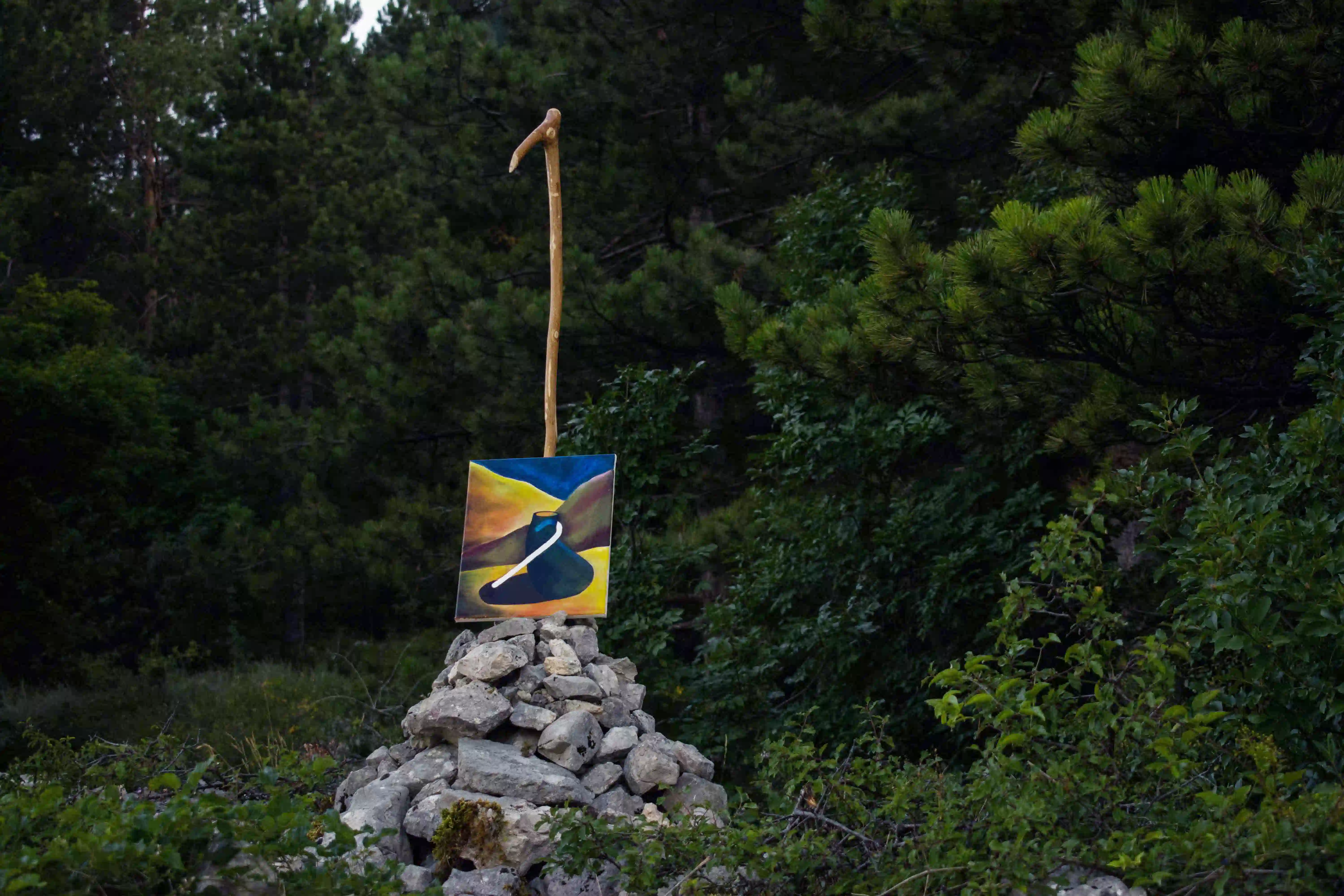
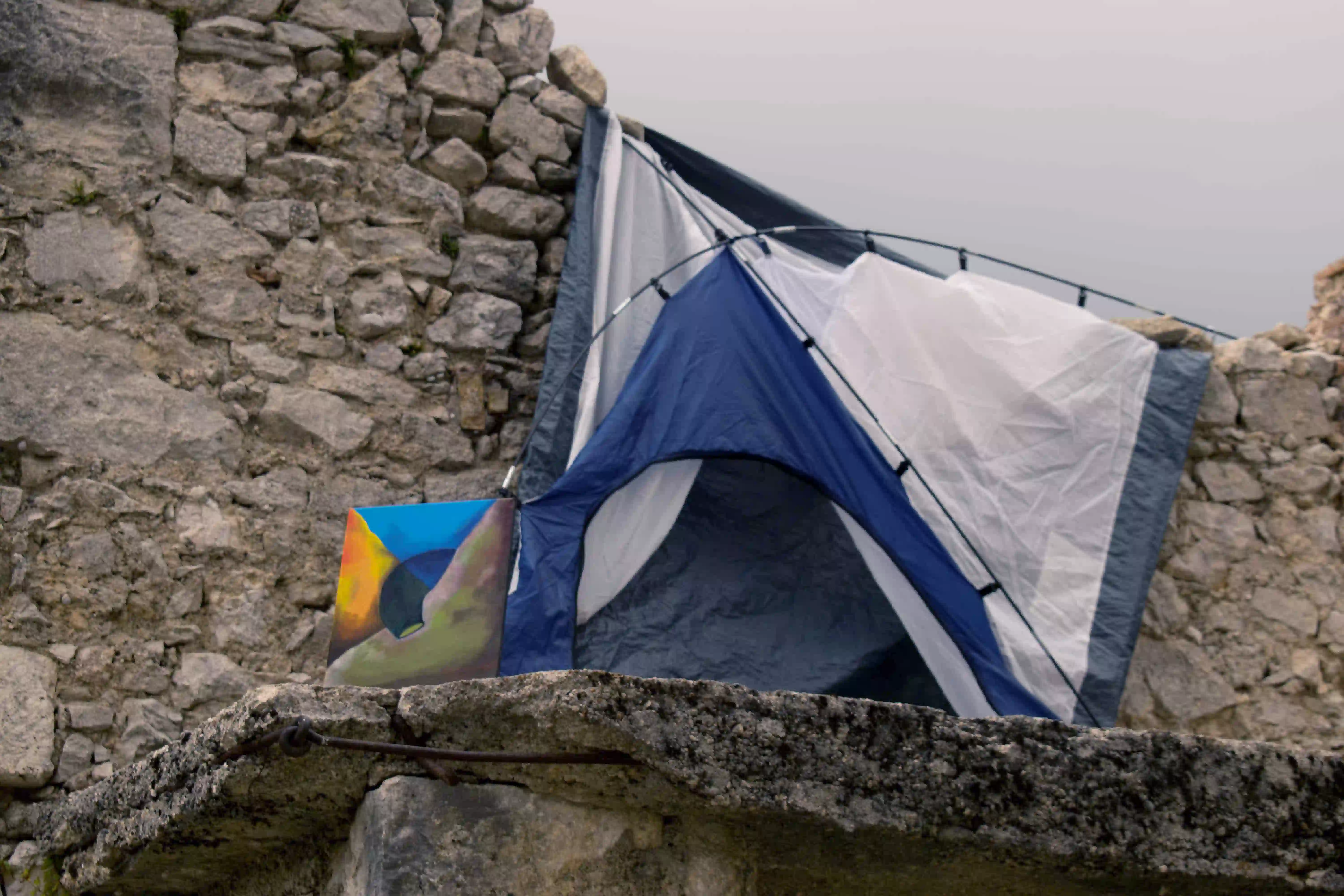
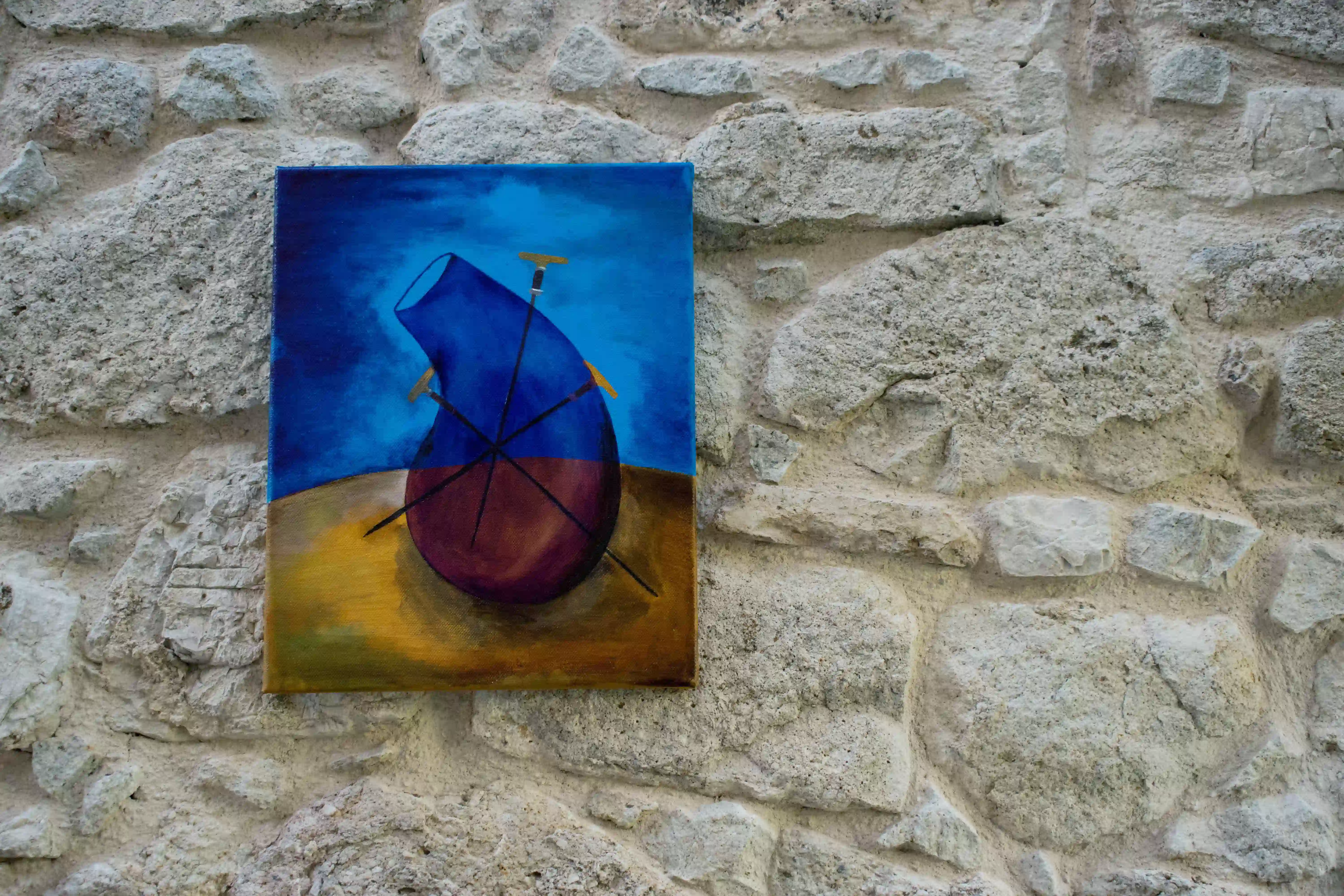
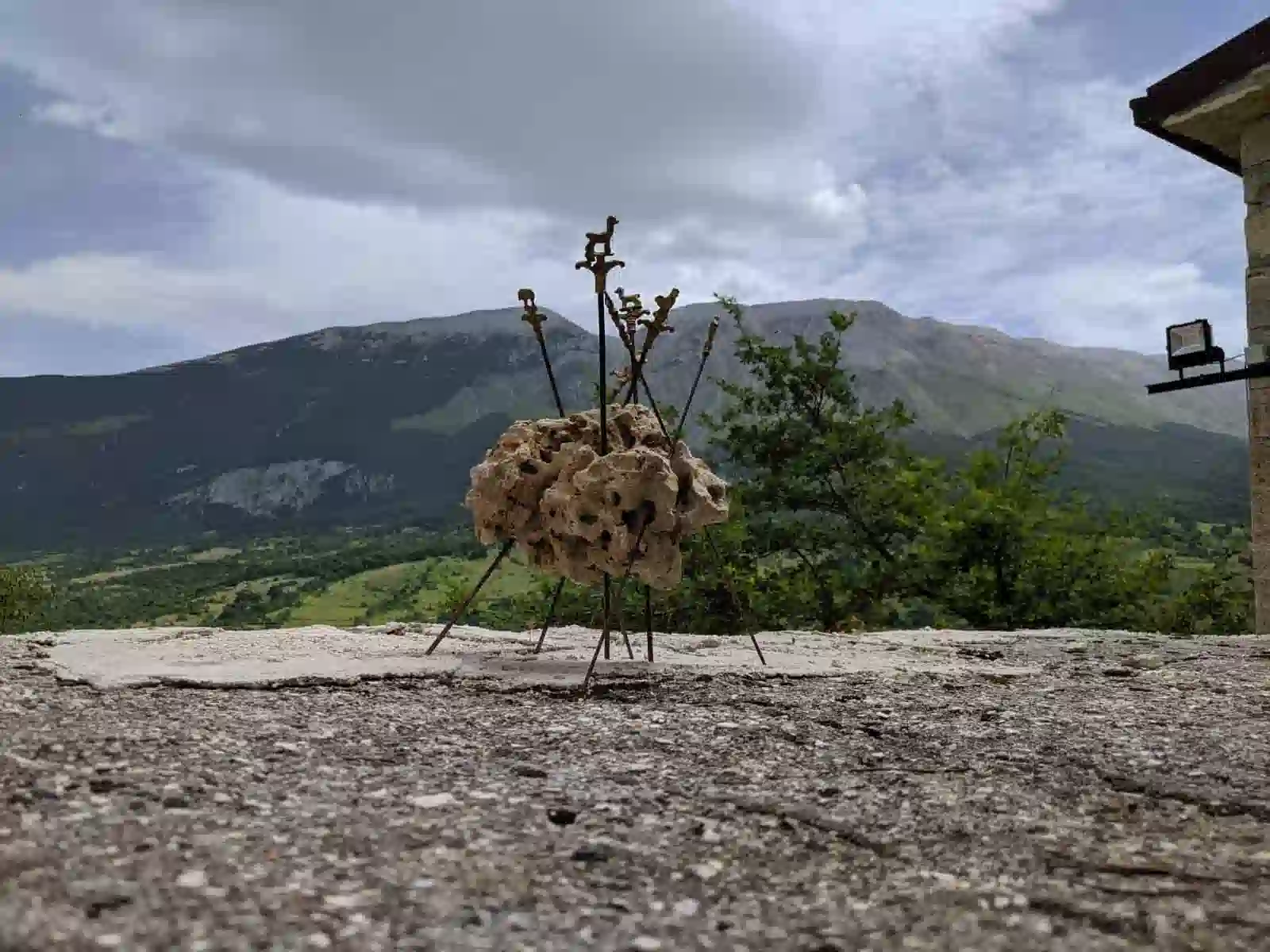
Icona
[1] Beata Vergine
[2] Eremo fallimento
[3] A Carmelo
Matteo Messori
[1] Initially inspired by the transmutation of flesh and the division that certain cultures establish, this artwork, while being a reference to the Lady of the Seven Sorrows, praises the use of flesh as an element and its future absence in the world that awaits us
[2] The idea of this intervention was born from the studies about hermitages, places that were once built by hermits and are difficult to access. The exhibited work is my anser to the question: would we be capable of such quest today? Would man be capable of living in full solitude today?
[3] A tribute to a villager. An artwork that encourages movement in this conceptually static society. The fact that it is only visible through a telescope proves how far we are from the moral labour of long ago.
[2] The idea of this intervention was born from the studies about hermitages, places that were once built by hermits and are difficult to access. The exhibited work is my anser to the question: would we be capable of such quest today? Would man be capable of living in full solitude today?
[3] A tribute to a villager. An artwork that encourages movement in this conceptually static society. The fact that it is only visible through a telescope proves how far we are from the moral labour of long ago.
[1] Travertine stone, meat poker, acrylic and oil on canvas, 38 x 25 cm
[2] Camping tent, acrylic, oil on canvas, 38 x 25 cm
[3] Telescope, rose wood, acrylic and oil on canvas, 38 x 25 cm
[2] Camping tent, acrylic, oil on canvas, 38 x 25 cm
[3] Telescope, rose wood, acrylic and oil on canvas, 38 x 25 cm
[1] Inizialmente ispirato dalle tramutazioni delle carni e delle divisioni che certe culture instaurano, quest’opera, oltre a essere un riferimento alla madonna dei sette dolori, vuole elogiare l’uso della carne come elemento e la sua futura mancanza in un mondo che ci attende
[2] L’idea di questo intervento nasce grazie agli studi sull’eremo, luogo di difficile accesso e costruito un tempo dagli eremiti. Il lavoro esposto è una mia risposta alla domanda: oggi noi siamo capaci di tale impresa? L’uomo oggi sarebbe capace di vivere in piena solitudine?
[3]Un tributo ad un paesano. Un’opera che invita al movimento in questa società concettualmente statica. Il fatto che sia visibile solo dal telescopio vuole dimostrare la lontananza che abbiamo verso i lavori morali di un tempo.
[2] L’idea di questo intervento nasce grazie agli studi sull’eremo, luogo di difficile accesso e costruito un tempo dagli eremiti. Il lavoro esposto è una mia risposta alla domanda: oggi noi siamo capaci di tale impresa? L’uomo oggi sarebbe capace di vivere in piena solitudine?
[3]Un tributo ad un paesano. Un’opera che invita al movimento in questa società concettualmente statica. Il fatto che sia visibile solo dal telescopio vuole dimostrare la lontananza che abbiamo verso i lavori morali di un tempo.
[1] Pietra in Travertino, infilzacarne, acrilico e olio su tela 38 x 25 cm
[2] Tenda, acrilico, olio su tela 38 x 25 cm
[3] Telescopio, legno di rosa, acrilico e olio su tela 38 x 25 cm
[2] Tenda, acrilico, olio su tela 38 x 25 cm
[3] Telescopio, legno di rosa, acrilico e olio su tela 38 x 25 cm
